The guide to ecommerce conversion rate optimization
The ultimate goal of any ecommerce business is to get more sales and satisfied customers. It’s achieved not only by offering high quality products but also by having a visually appealing and easy to use website with a straightforward checkout process and extensive information on presented items, delivery, and payment options.
How do you hit the mark and convert more visitors into paying customers? In this post, we’ll discuss the best practices of increasing ecommerce conversion rates.
What is an ecommerce conversion rate?
For starters, let us remind you of the basics. On an ecommerce website, the conversion rate is defined by the ratio of successful transactions to all user sessions. Say, you have 1,000 visitors and 50 of them make a purchase—your conversion rate equals 0,05, or 5%.
Besides purchases, which are major ecommerce conversion goals, you can track and analyze (as well as optimize for) smaller conversions like newsletter sign-ups or referral invites.
Ecommerce vs. retail conversion rates
Ecommerce sales represent a part of overall retail sales, and the percentage of online purchases continues to grow year after year. For instance, in the US, ecommerce sales have almost tripled in the last decade: compared to 7% in 2011, they accounted for 20% of retail sales in 2020. With the consumer changes brought about by the pandemic, we can only expect this number to go up.
Average conversion rates are higher in offline retail. Brick-and-mortar stores give shoppers an opportunity to interact with products or try them, as well as consult with a manager right away. Plus, there’s no delivery hassle, additional costs, or risks of mismatched or missing orders. Ecommerce has its own advantages: people can shop anytime from the comfort of their home and browse through all available products without feeling pressured.
What is a good ecommerce conversion rate?
Ecommerce conversion rates vary greatly by industry but in general, the average is 2.6% according to data from 2015 to 2020. Some more specific statistics might show other numbers. For instance, the average conversion rate of stores powered by Shopify was estimated at just 1.5% and 1.6% in 2019 and 2020.
In any case, converting less than 1 out of 100 visitors is bad. While anything that exceeds the average can be considered good.
Take your niche into consideration when setting your conversion goals. Statistics gathered by Growcode reveal that health and wellbeing, arts and crafts, and pet care are the highest converting categories, with the average rate reaching 3-4%.
Interestingly enough, average conversions are two times higher on desktop: 3.9% compared to 1.8% on smartphones, according to 2020 data from Endertech. But it doesn’t mean you should focus more on a desktop version: mobile optimization is crucial for both user experience and indexing by search engines.
Why analyzing and improving conversion rates is important in ecommerce
If you’re not tracking and analyzing your conversion rates, you’re much less likely to know what issues pose a problem to users and how to improve your website. Basically, you’re putting your business at risk by not learning what causes users to purchase, and what doesn’t.
Paying attention to conversions and optimizing your website will bring you numerous advantages:
- Insights into consumer behavior. The process of conversion improvement requires thorough research of how visitors interact with your website and what products they’re after.
- Knowledge of technical website issues. Quite often, purchases are not completed due to issues unrelated to product value and content quality: website crashes, long loading times, confusing errors, etc. When you dive into what prevents users from converting, you have a chance to identify problems you were previously unaware of.
- Increased customer loyalty. By optimizing your website for conversions, you’ll be improving user experience and serving people more targeted and individualized offers. This will translate into loyal returning customers.
- Chances to get higher search rankings. SEO goes hand in hand with CRO: both pursue the goal of providing seamless UX and helpful content. Basically, if you’re tweaking your site to get more purchases, you’re becoming more attractive to search engines as well.
What factors impact ecommerce conversions?
In a nutshell, to receive ecommerce orders, you need two things: products that correspond to consumer demands and a website that is fast, interactive, and informative. We’re not going to talk about product value but rather concentrate on ecommerce UX and site performance because both are crucial for driving conversions.
- Loading speed. How fast a web page loads its content is important for any website, but in ecommerce, it’s even more pressing. If your pages don’t become accessible within 2 seconds, you either risk losing visitors or cause them some distress. Learn how to identify and fix what might be slowing your site down from our post on page experience.
- Website structure and navigation. It should be easy for users to find what they’re looking for on your site, as well as explore your offers and content. If something is blocking the user journey from one page to another, visitors will probably leave your store. Analyze the hierarchy of your pages and make sure to design helpful navigation elements (menus, breadcrumbs, filters, etc.).
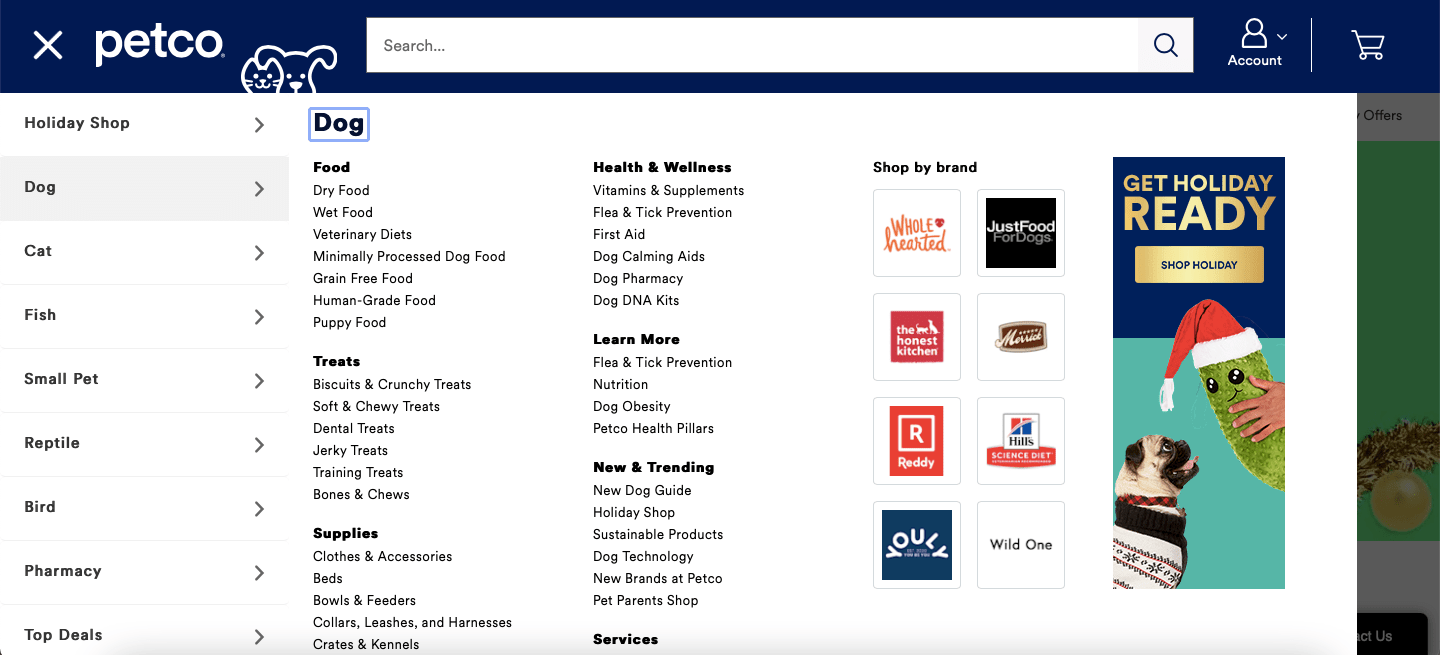
- Relevant content. People looking to buy something online want to have realistic product descriptions and as many details as possible: for example, information about how to use products, what’s unique about them, what’s the brand story, how payment and delivery goes, etc. With that said, you need to provide informative product pages and think of incorporating additional helpful content: blog posts related to your niche, video reviews, tutorials, and so on.
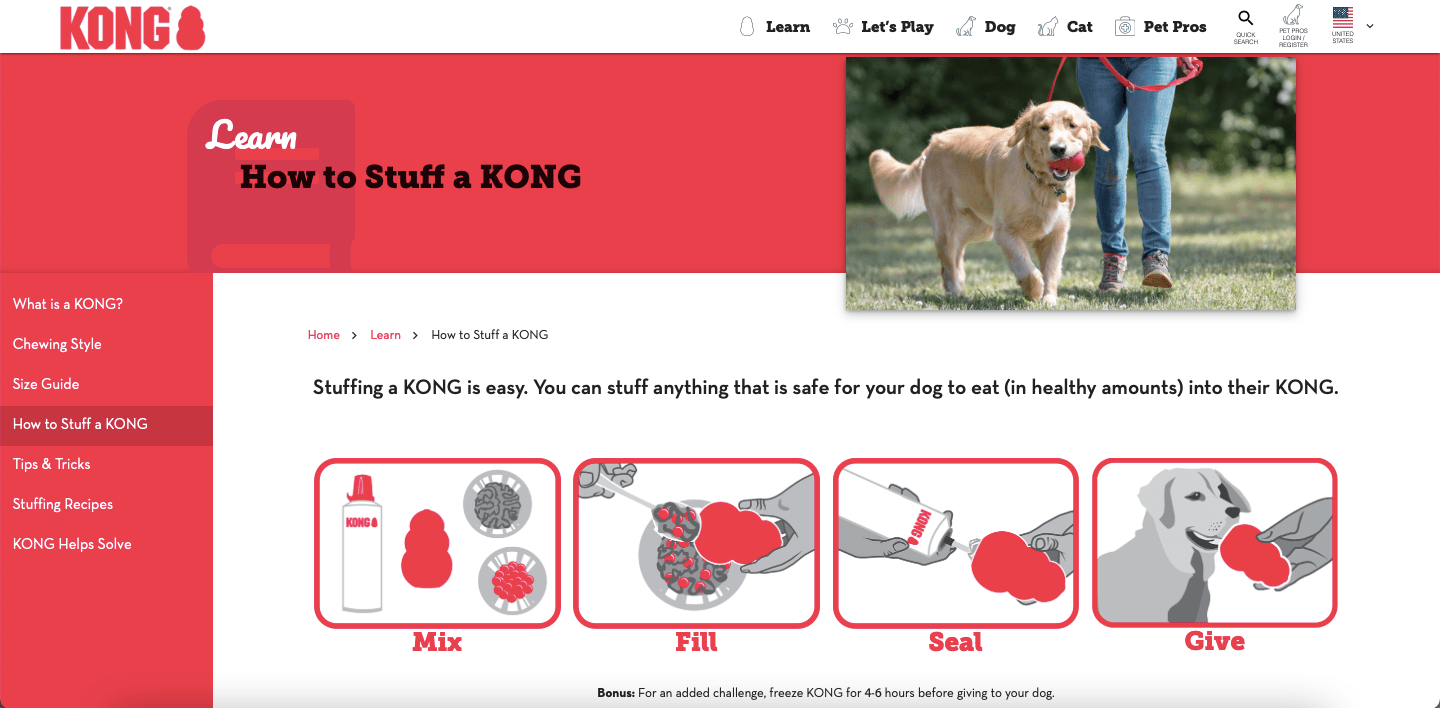
- Reviews. Product reviews are a great tool for shoppers to learn more about the products they’re interested in and for ecommerce brands to communicate with customers and understand their products’ advantages and disadvantages. Recent findings show that less than 9% of consumers don’t read reviews, while almost 15% read more than 10 before making a purchase. You should definitely incorporate reviews on your website and sometimes, it makes sense to feature them in several different ways (in the dedicated reviews section and next to a product description, for example).
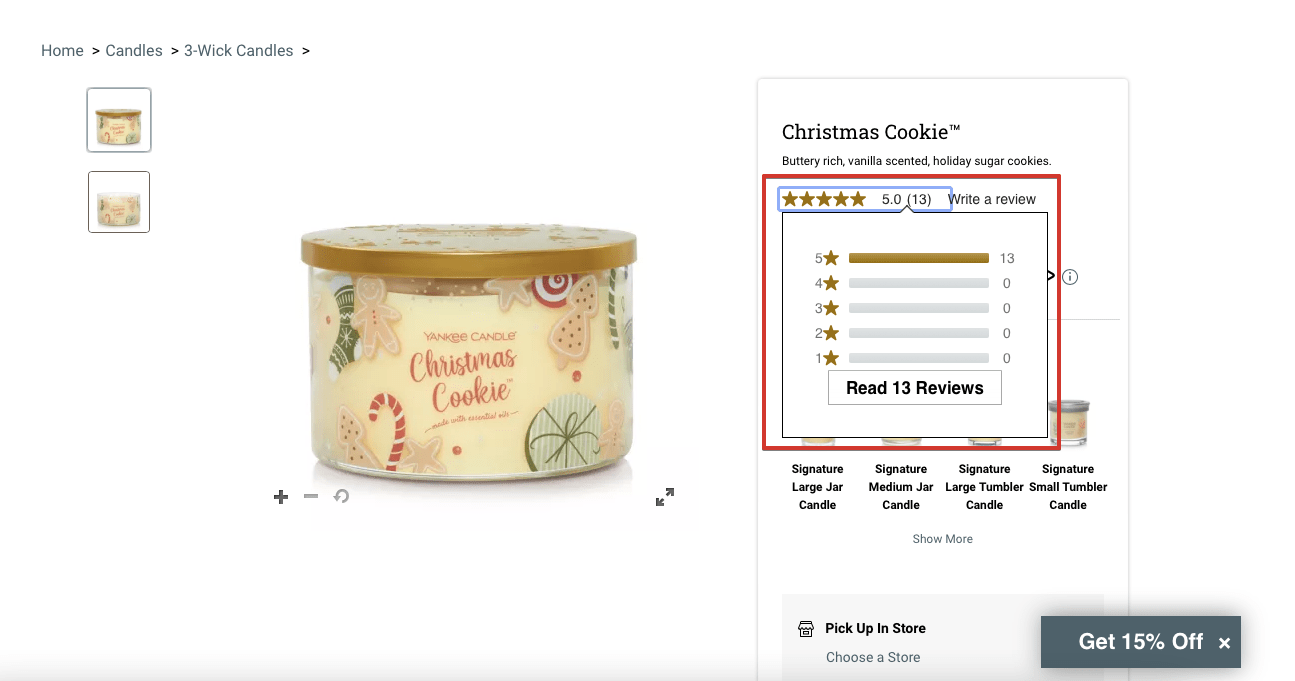
- Personalization. It’s been a cross-industry buzzword for years. The 2018 research by Epsilon showed that 80% of consumers were more likely to buy from and return to a brand that offers personalized experiences. Now, it’s not even a question of getting more conversions but a question of surviving the competition—it’s hardly doable without personalization techniques. For instance, the 2021 Kibo report reveals that personalized site search was the biggest ROI driver for ecommerce businesses. AI-powered recommendations, flexible order management, and individualized messaging across different customer segments are just a few examples of personalization that can bring you an improved conversion rate, as well as a higher AOV and increased average time on site.
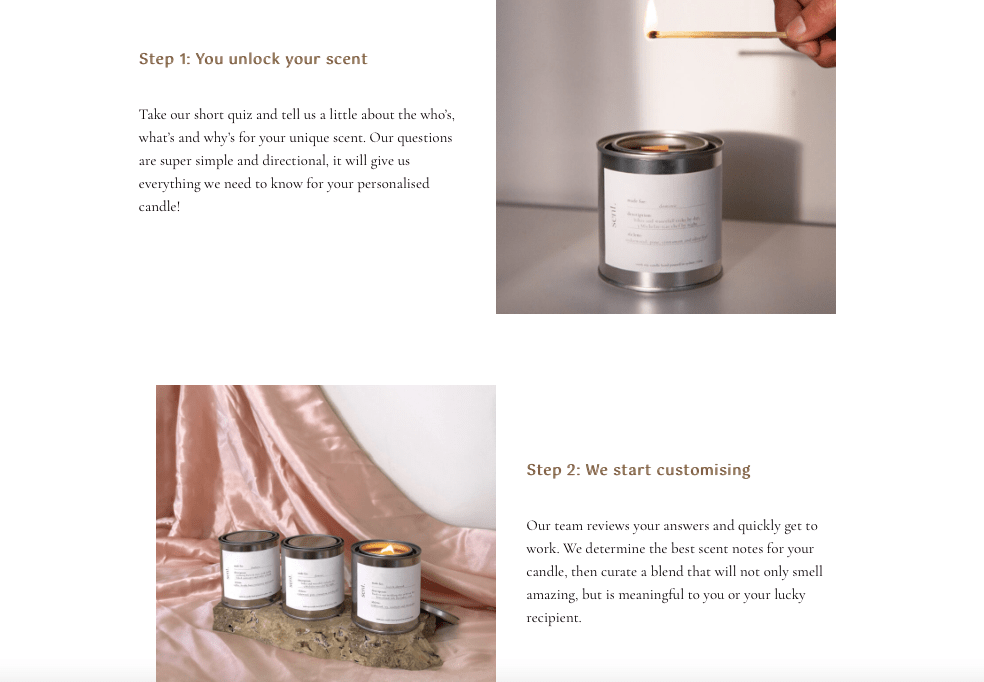
- Interactive features. Tech-savvy shoppers are on the rise, and so are their expectations for digital experiences. Video streaming is conquering the world of retail and innovative solutions like AR fitting rooms are not a wonder anymore but becoming a norm. For example, research shows that in the furniture sector, consumers are 11 times more likely to make a purchase if they are offered an AR-powered feature to locate items in their own homes. Product-match quizzes are also great for boosting conversions by gamifying the shopping experience and serving the right recommendations.
- Customer service. Customers feel safer when they have an option to contact support to ask questions and resolve order issues. Shoppers who chat with a retailer buy 3 times more often and spend 10-15% more on average. There are numerous ways to maintain communication with customers: make sure to show the phone number on your website, integrate a live chat or a chatbot, and utilize messages on social media.
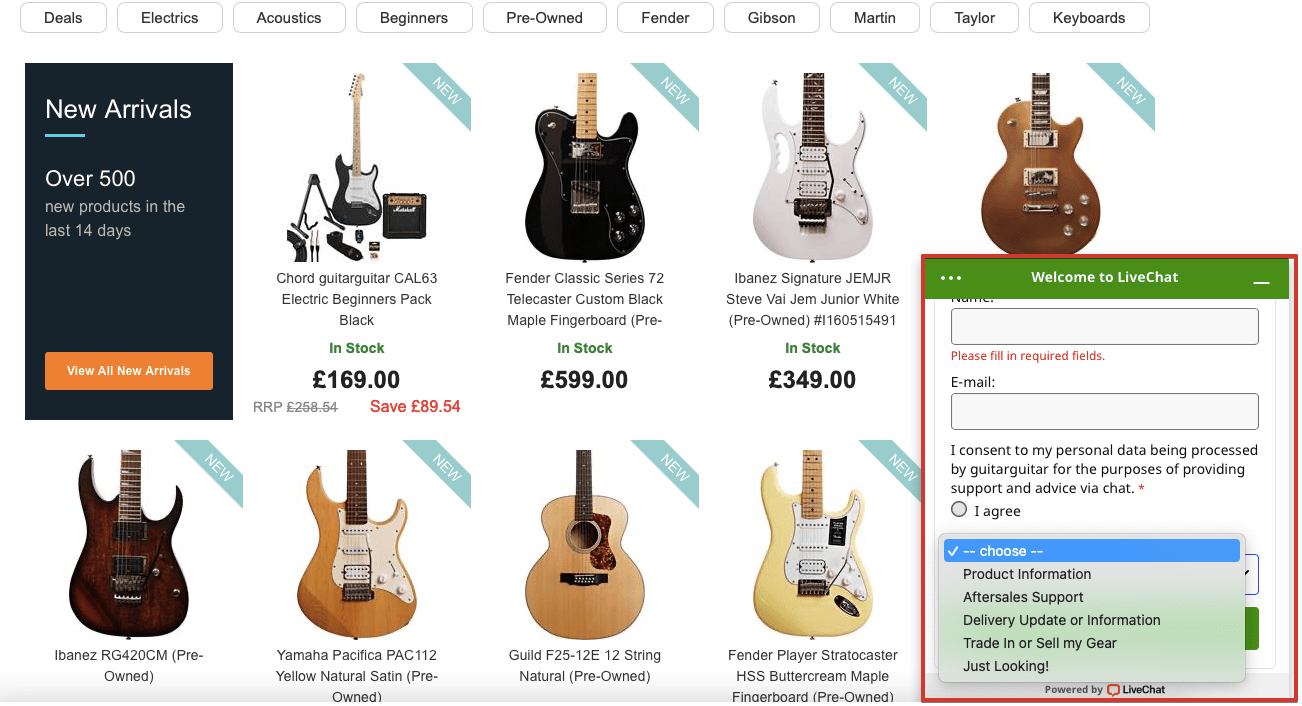
We’ll show some examples of successful approaches to the above mentioned aspects in a bit. Before that, let’s see how an ecommerce conversion funnel works and what you should consider at each stage of its stages.
Designing an ecommerce conversion funnel
The classical conversion funnel model consists of four stages: Awareness, Interest, Desire, and Action. You can think of them in this way:
- Awareness represents all website visits (you can also measure social media engagement and other interactions)
- Interest represents all product page sessions
- Desire represents add-to-cart sessions (or other engagements like chatting with the support, checking delivery or return policy sections)
- Action represents completed purchases
On top of that, there’s the retention stage. When you get a new conversion, your optimization process doesn’t stop there: you have to continue engaging and communicating with existing customers to make them return to your store, buy more, and spread the word about your products.
To improve your conversion rates, you should adjust your web pages and marketing efforts for each stage of the funnel.
- To boost awareness, you should maintain a stable search presence, engage with followers on social media, cooperate with influencers and affiliates, and run ad campaigns.
- To grow interest in your products, you need to ensure that your pages can be easily located and all essential information is clearly visible (trust signals, policies, special offers, and so on).
- To create desire, helpful content and interactive features enter into the picture. Provide users with an immersive experience so that once they get to a product page, they can easily get all answers they need: read reviews, explore item variations, watch videos where a product is in use, share information with friends, learn about pricing options and other details.
- In motivating users to make a purchasing decision, the checkout process is of utmost importance. Make sure to eliminate any friction, provide enough pricing options (and choose those that are commonly used by your target audience), and allow users to buy as guests.
Tracking ecommerce conversions in Google Analytics
Google Analytics is the first tool to go to for measuring your conversions. If you’re new to it, check out our post on Google Analytics setup.
The service has a dedicated Ecommerce subsection in the Conversions section. To get GA reports, you have to enable Ecommerce and set up a tracking code on your website (the latter requires HTML/JavaScript knowledge).
Standard ecommerce reports will include the following data: the number of transactions, the number of sessions before leading to purchase, revenue by date or product, AOV, and conversion rates.
Google Analytics also allows you to track more data with Enhanced Ecommerce. To unlock it, you need to adopt Universal Analytics (the version updated in 2020), configure it in gtag.js, and enable Enhanced Ecommerce in the settings. Once you do that, you’ll no longer have standard ecommerce reports but only new ones that incorporate much more data.
Enhanced Ecommerce reports will give you insights into shopping behavior: you’ll see how user sessions correlate with different stages of your sales funnel. You can also visualize different segments: when clicking on any funnel step or transition in the Shopping Behavior Analysis or Checkout Behavior Analysis graph, you’ll see a pop-up window suggesting to create a segment. This way, you can break down your data by different parameters and separate sessions with product views, sessions with checkout abandonment, etc.
You can also track ecommerce parameters with Google Tag Manager: by creating triggers and transactions events in GTM and synchronizing this data with GA, you’ll have more information to work with.
Note that Google Analytics counts conversions based on sessions (it’s a ratio of transactions to sessions). This approach can be misleading since it doesn’t consider situations when the same user visits a website several times. You can calculate your conversion rate in GA differently—by dividing transactions by users. The user-based approach isn’t perfect either, as it ignores when the same user visits a website from different devices or clears cache, but it’s more likely to give you a more realistic measurement.
Proven ways to optimize for ecommerce conversion rates
CRO (conversion rate optimization) includes the following steps:
- Research: by analyzing visitor behavior and site sessions, as well as by learning more about your customers through direct communication or surveys, you’ll get insights into what can be improved on the website and in your business in general.
- Hypothesis: to start improving your ecommerce store, come up with ideas of what changes or new features might help drive more conversions.
- Testing: there are several common testing methodologies and a variety of tools that will help you run tests to check if your hypotheses are true.
- Result analysis: in weeks or months, see how your conversion dynamics correlate with implemented changes.
You can learn more about the process from our guide on conversion rate optimization.
Now, let’s discover what tricks have proven to be successful CRO hypotheses for ecommerces and how different online retailers try to encourage customers to buy more.
Strong value proposition on landing pages
Your main and landing pages should have clear messaging about how your product is unique and beneficial. Naturally, being concise about product value is a general rule for any page, but it’s especially important to present a strong statement when you’re making a first impression.
Let’s look at several examples. The vitamin brand care/of crafted a short and engaging headline:
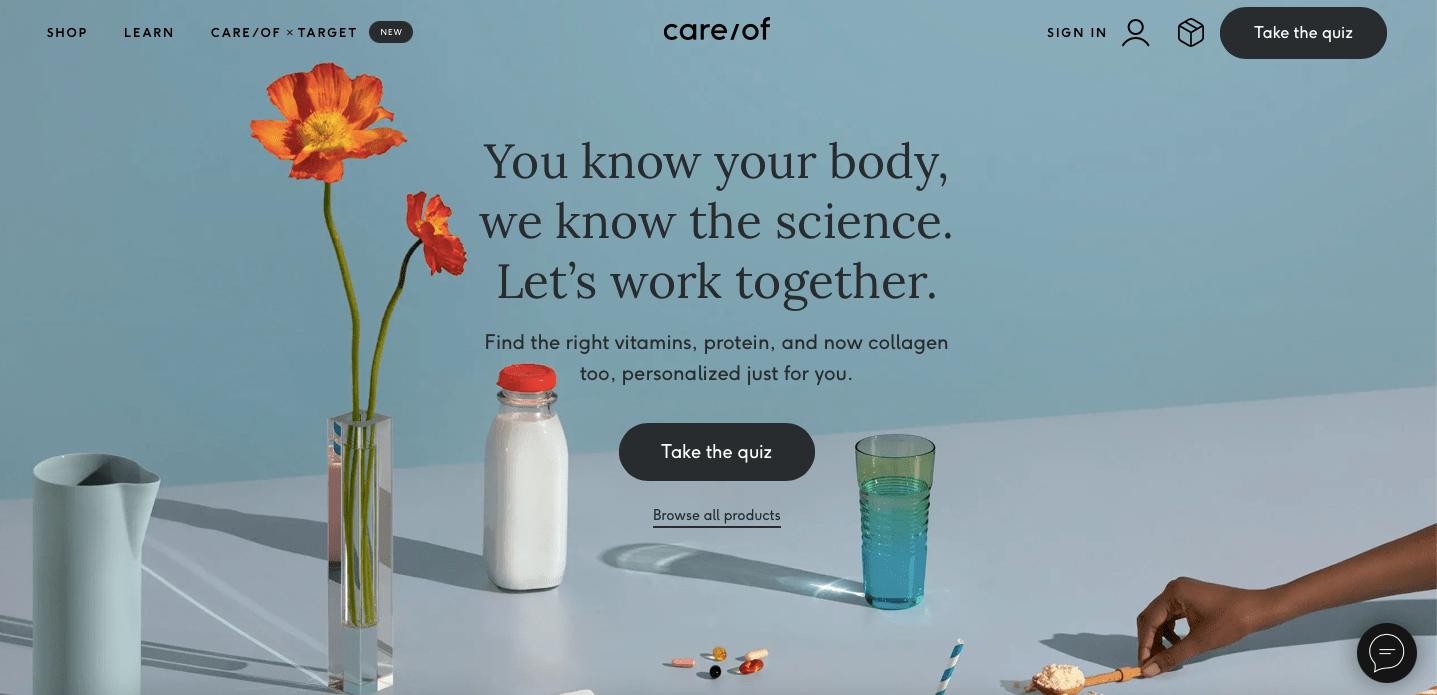
In this message, the company has already established some trust (by referring to scientific research behind their products) and offered personalization (the “Take the quiz” button catches user attention twice). When scrolling the page further, we’ll find the following information:
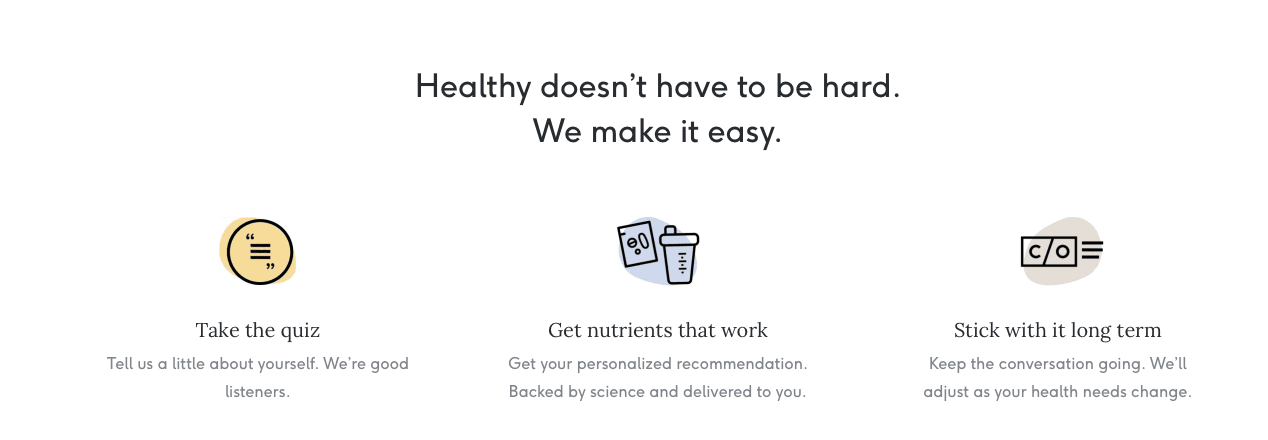
What care/of does is create a comforting promise that the products are an easy and safe way to improve health. Moreover, the brand ensures visitors that their needs will be covered in an individualized way. If everything works as it’s promised in this convincing copy, no wonder care/of was valued at $225 million in 2020.
Let’s take a look at another example. This is how Mirror, an innovative solution for home fitness trainings promotes itself:
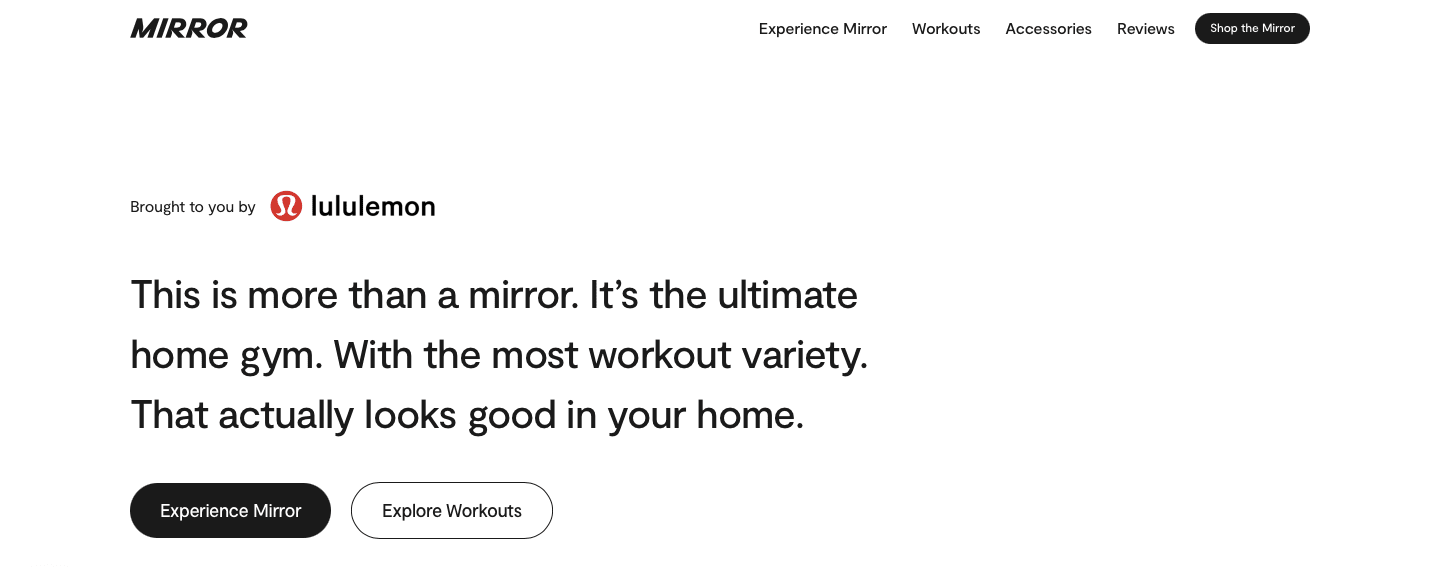
Even though there’s skepticism around messages built with the “it’s more than something” phrase, sometimes they work quite successfully. Here, the heading addresses both functionality and design demands, explaining that a product that looks like a regular mirror looks good in the home and can be used for a variety of workouts.
It’s essential to feature product benefits on the main page. For example, a pet toy manufacturer Kong introduces two major purposes of their products (play and behavioral correction) and gives links to the most helpful sections about how they can be used:
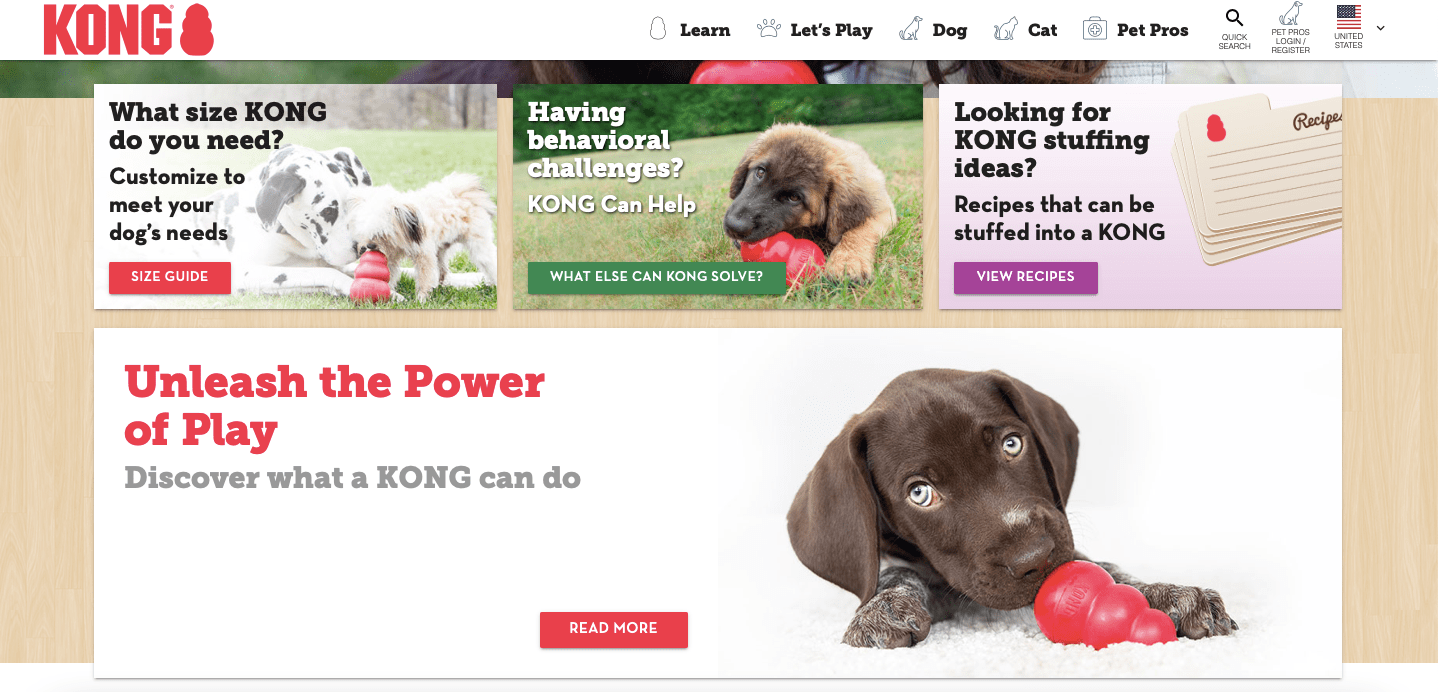
As a final example here, let’s take a business that makes fun products that have nothing to do with basic needs or health. In such cases, ecommerce can be creative without stuffing the page with loads of information. A handmade bookmark brand simply gives a photo and says that the products are “fairytales come alive”—and this is enough for the target audience to get hooked:
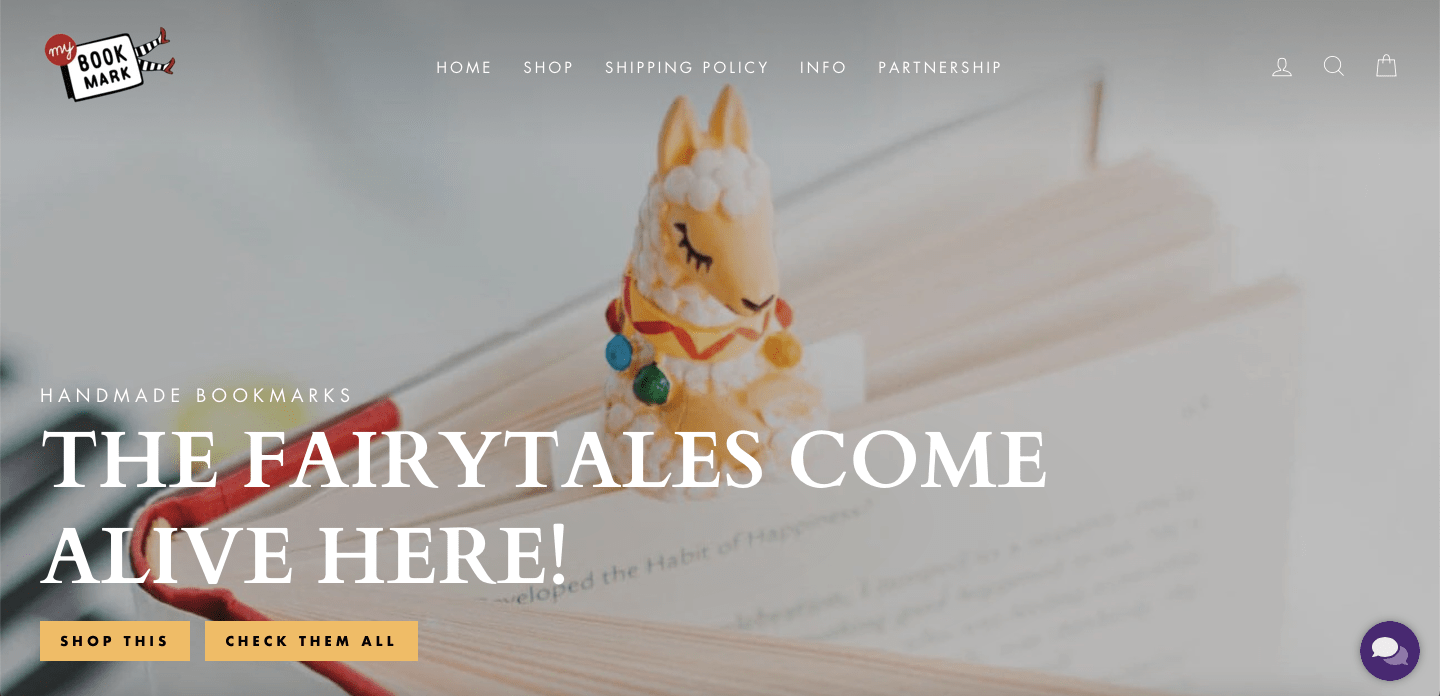
Videos to strengthen the product value
Videos and animations are a highly engaging medium and you should incorporate them on a website whenever it makes sense. In fact, 85% of Millennials are open to purchasing after watching a marketing video.
For example, an oral hygiene brand Marvis lets website visitors watch a fun collage of animations before getting access to content:
It’s fun to watch and tells users that this brand is there not just to sell you something—it can also engage with customers in an interesting way. For some shoppers, it’s fun elements that are the main decision-driving factor.
Marvis incorporates fun animations on product pages as well, staying true to its brand image:
Short videos are also becoming popular with fashion retailers. For instance, a jewelry brand Mam combines photos with videos on their pages to let users examine the products from more angles:
Compelling product descriptions
The more details you provide on product pages, the better. Include high-resolution photos made from different angles and tell about any parameters that apply (material, ingredients, colors, measurements, etc.). In the example below, the brand provides both bare facts (size and color) and creative description (about product design and style statement):
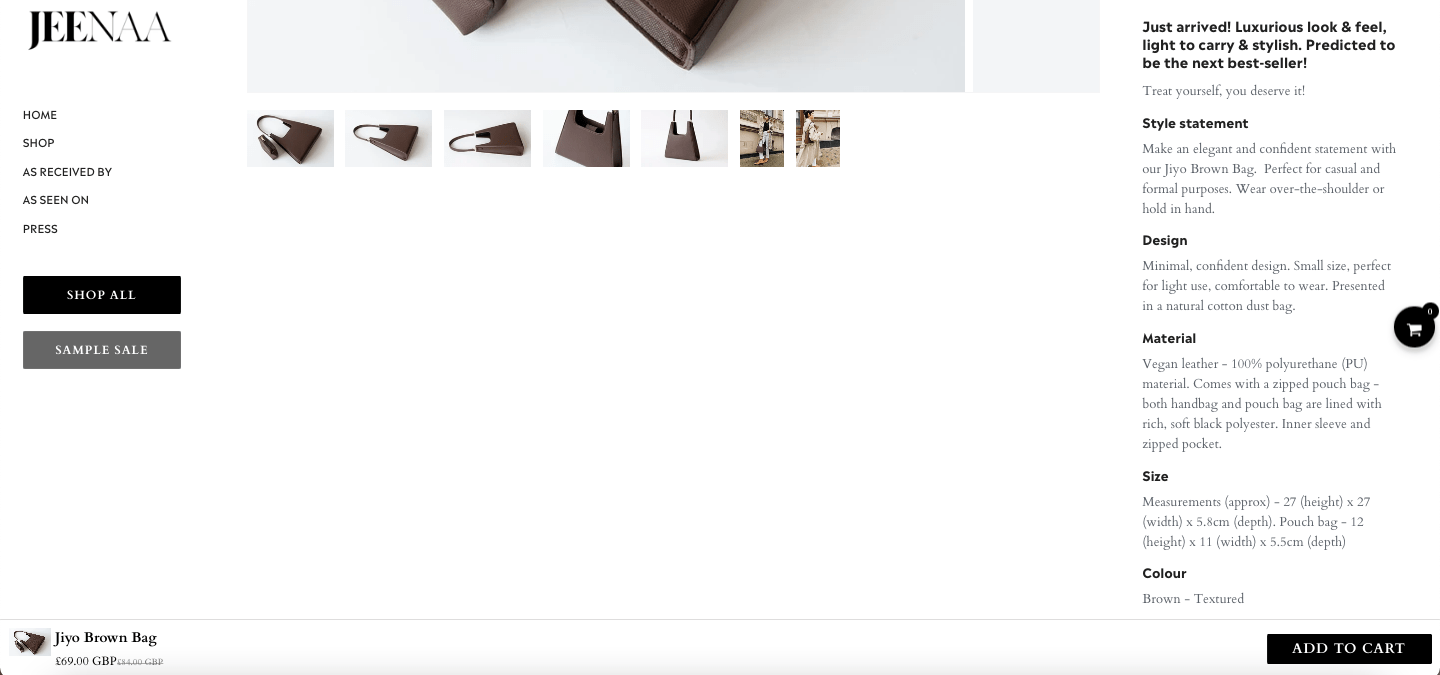
If certain products have a lot of variations, let users see each of them and include tips when necessary.
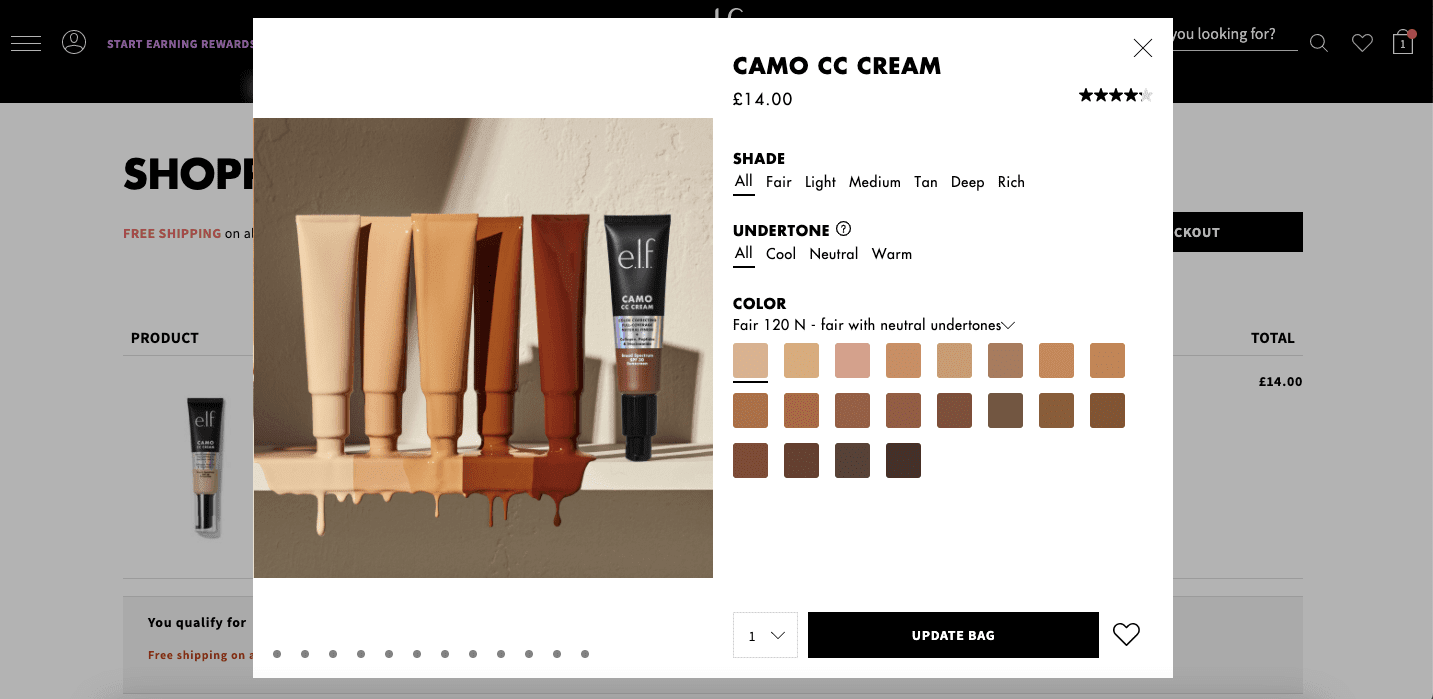
Besides having separate product pages, allow users to expand information about any item on the category page (without going to the product URL). Another helpful feature is a quick-add option that lets customers add items to cart without opening a product page.
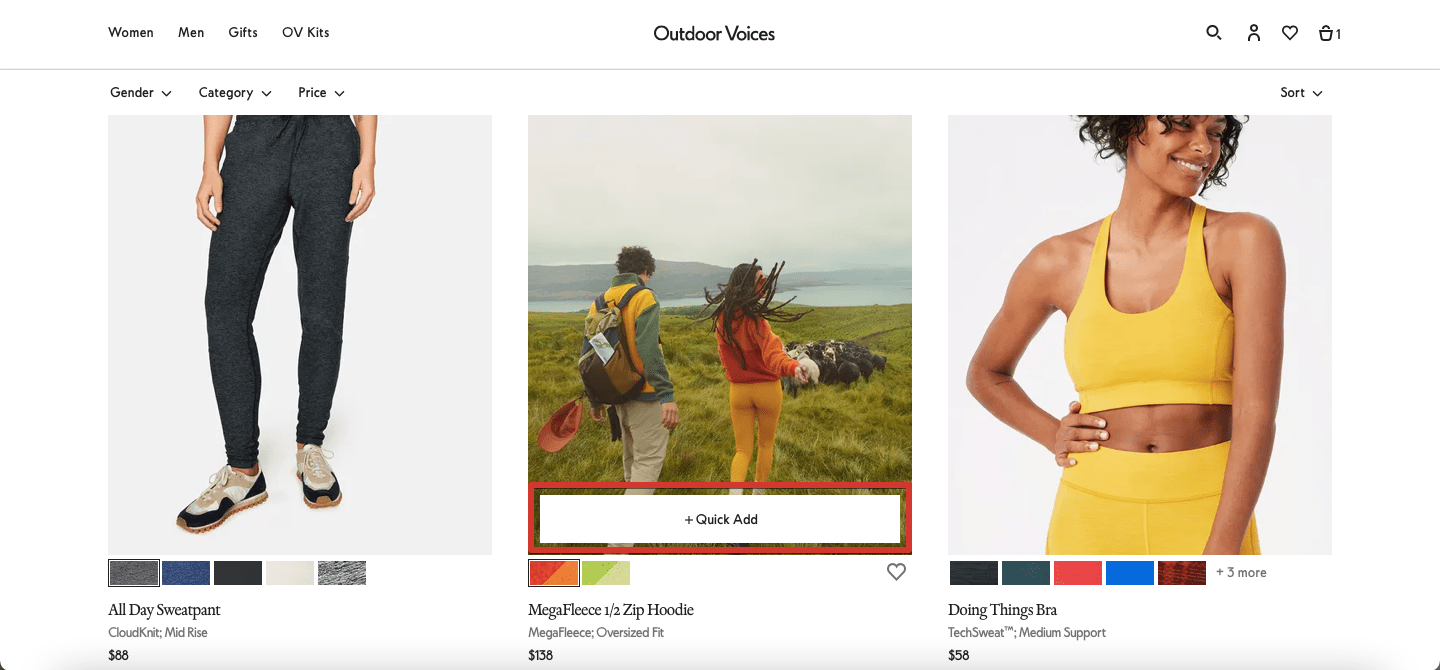
Intuitive UX and easy navigation
The way users navigate between pages, search for and filter products, and complete a purchase defines your success in sales conversion rates. We’ll talk about some UX nuances to take care of.
Accessibility standards
Don’t underestimate accessibility rules and make sure your web pages are ADA compliant and available to people with visual impairments or cognitive disabilities. There are plenty of accessibility solutions in the form of website widgets or separate tools (for voice-enabled navigation, for example).
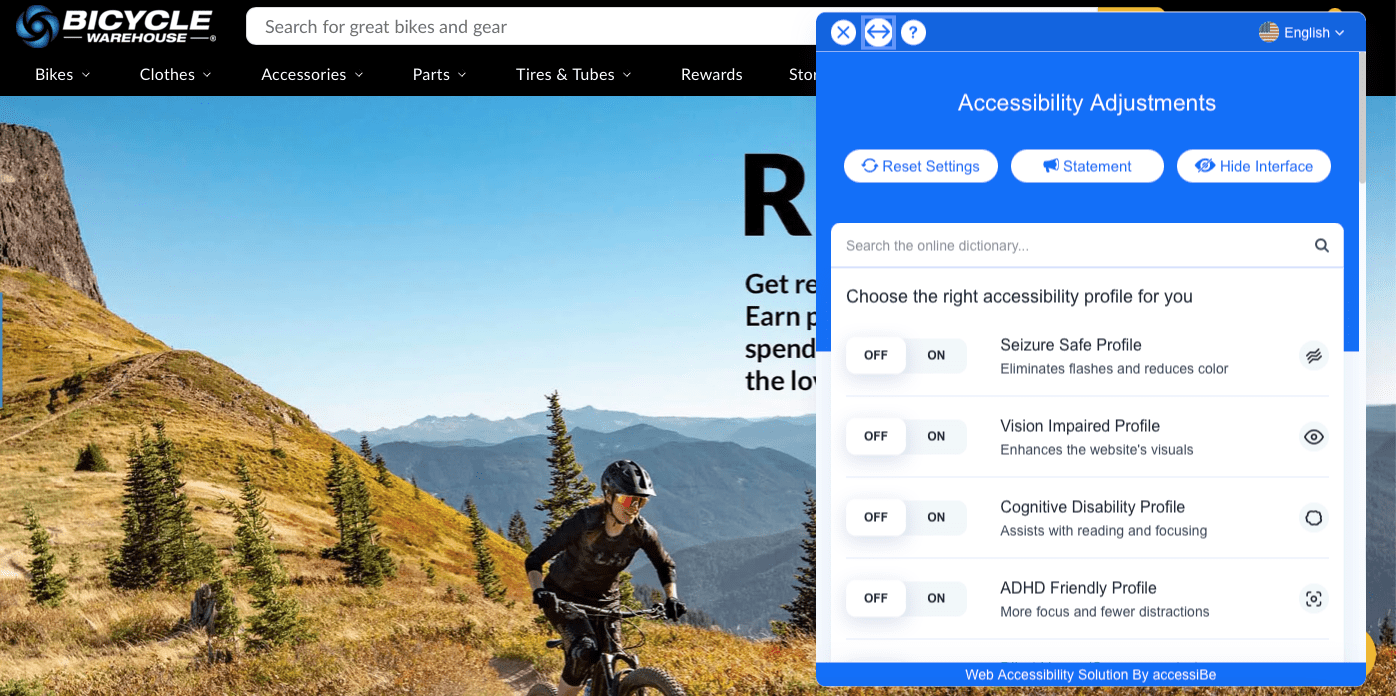
Flexible search options
Users should be able to easily navigate through categories and pages, and also search for products they need. Make the search option visible and consider adding popular search tags:
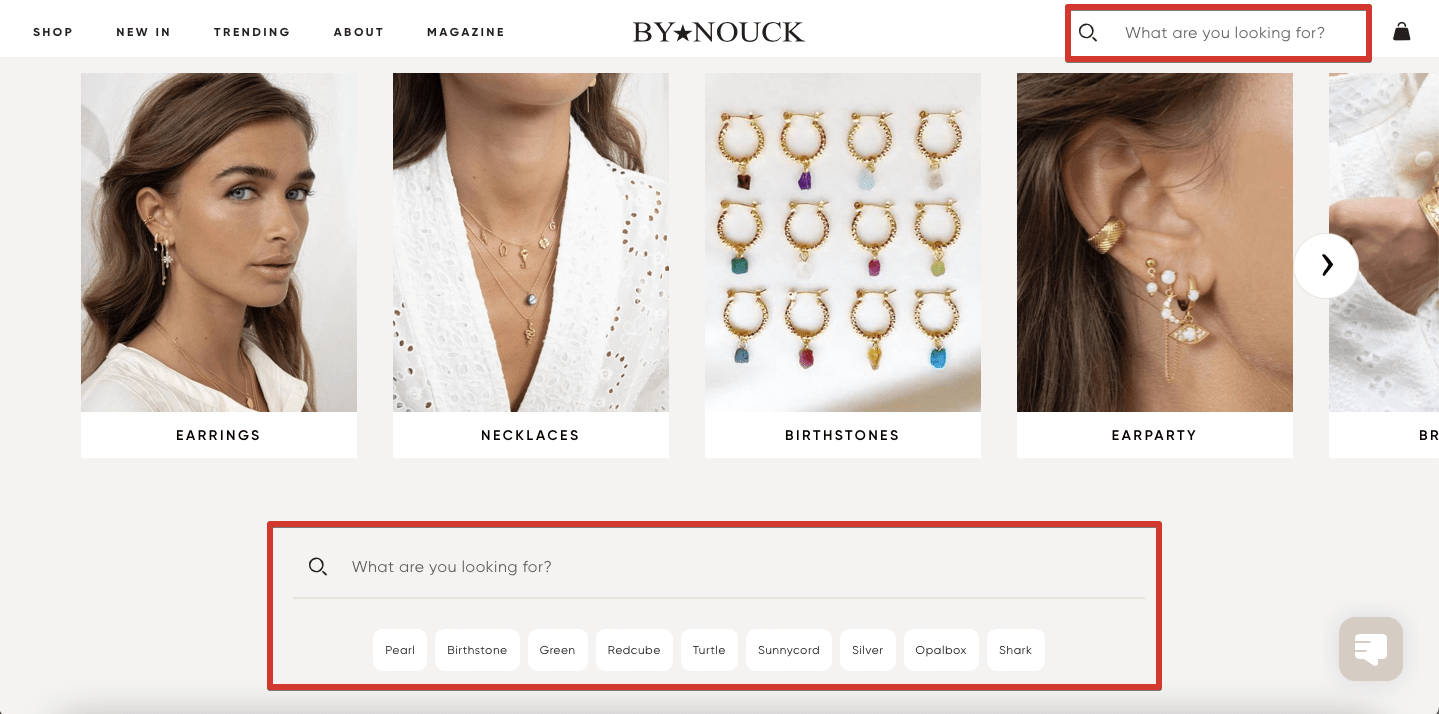
If your store uses popular ecommerce CMSs like BigCommerce, you’ll have in-built analytics on what users are typing into your search. These insights will help you improve the search itself and create new products that are in high demand. For instance, the sports apparel brand Fila uses data on product popularity to rethink their operation and guide designers to making the sportswear their customers are after.
There are apps that can help you power your search tool with dynamic predictions and spelling error recognition.
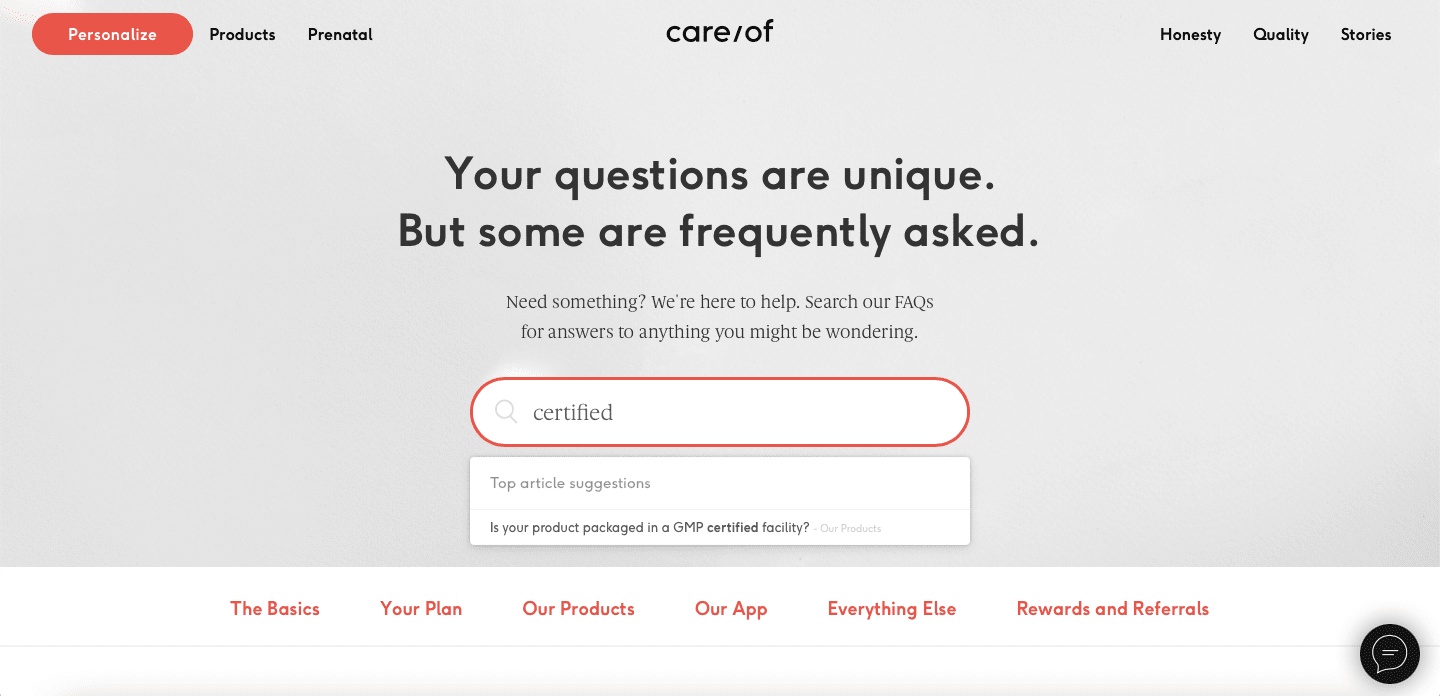
Sometimes it makes sense to add search bars not only to product pages but to other sections as well: for example, FAQ (see the image above) or reviews (see the image below).
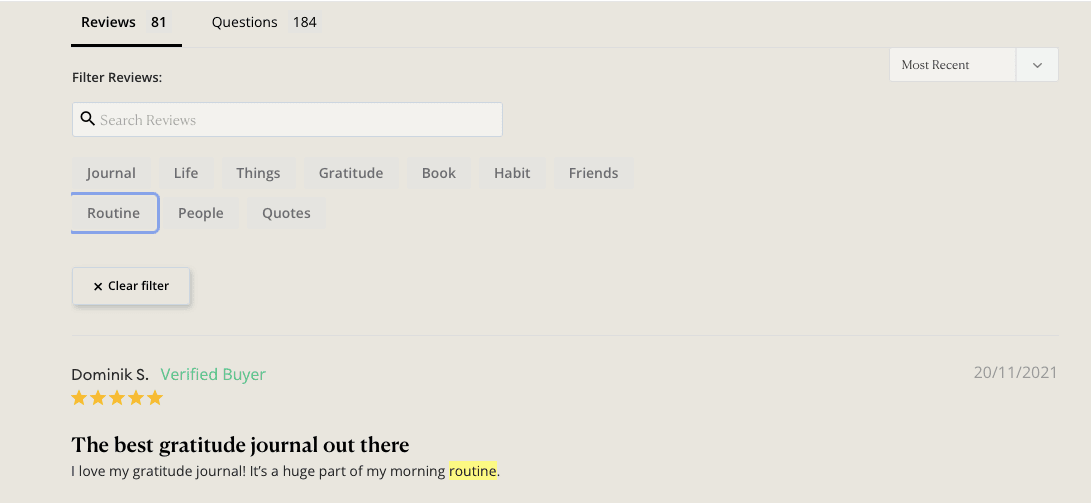
Also, consider integrating visual search: the majority of Millennials and younger consumers prefer visual search, and this technology is estimated to bring a revenue increase of up to 30% to ecommerce businesses.
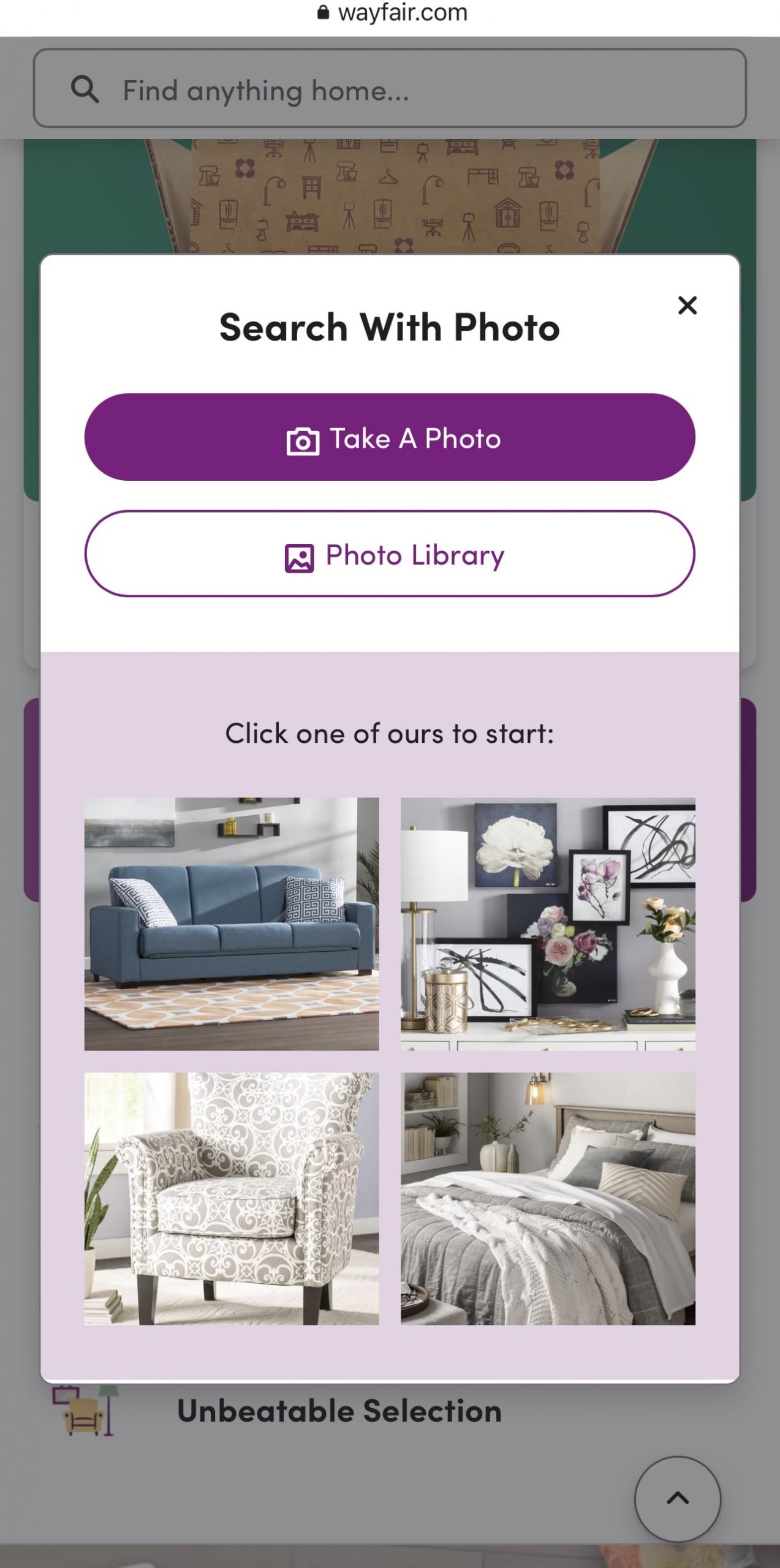
Size guides and try-on experiences
If you’re dealing with clothes, don’t let your customers wonder if a product will fit, especially when you’re targeting different locations that vary in measurement systems.
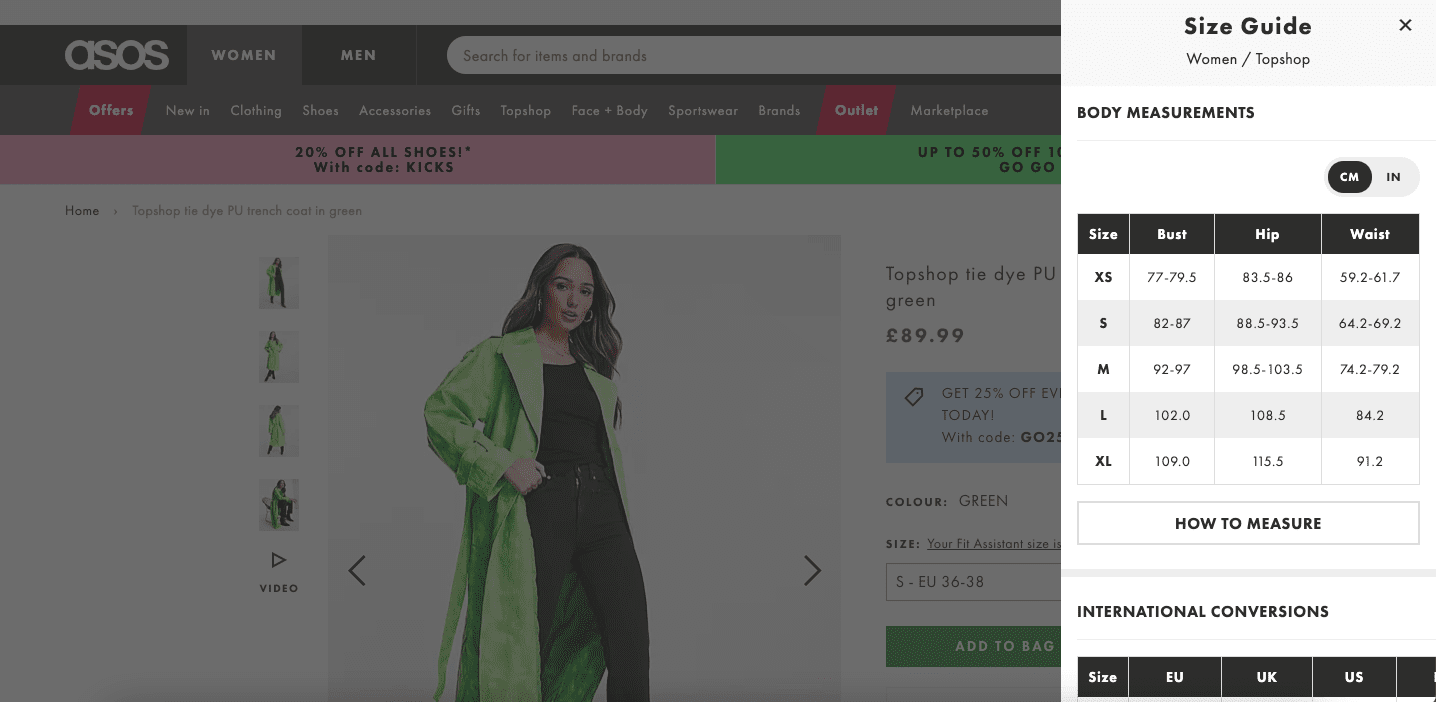
Or, if your store sells makeup products, accessories, or other things that can be visualized on a user, integrate an immersive virtual experience—offer people to upload their photo and try products on.
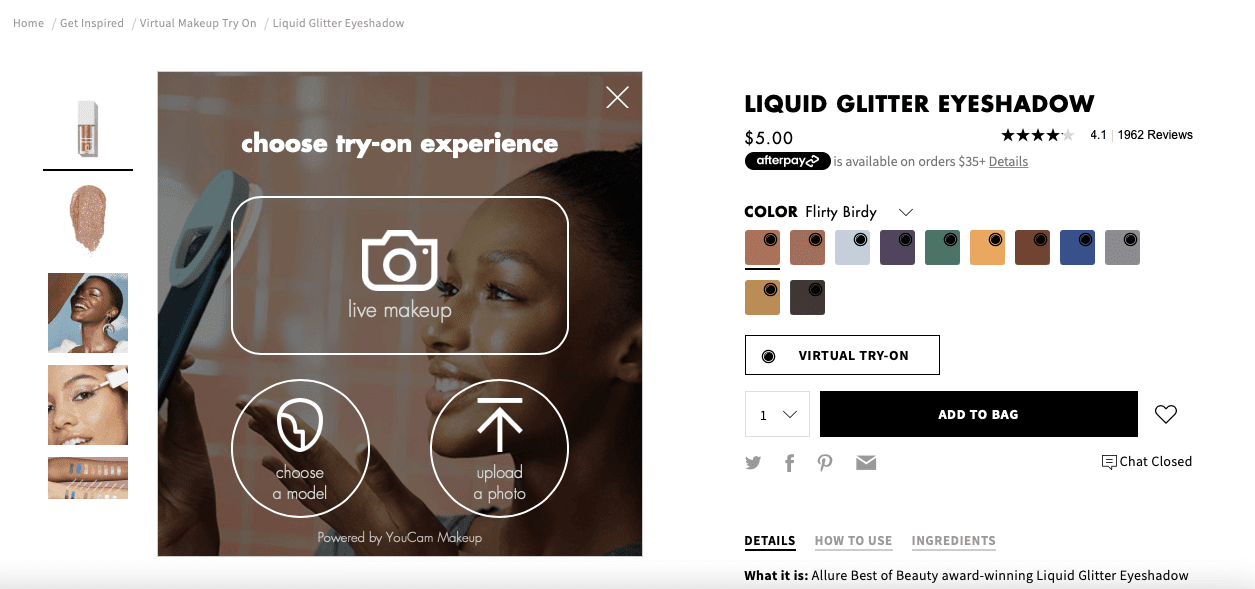
Guidance to users who don’t know what they’re looking for
When designing your website’s structure, think of featuring best-selling products or adding a section for people new to your brand.
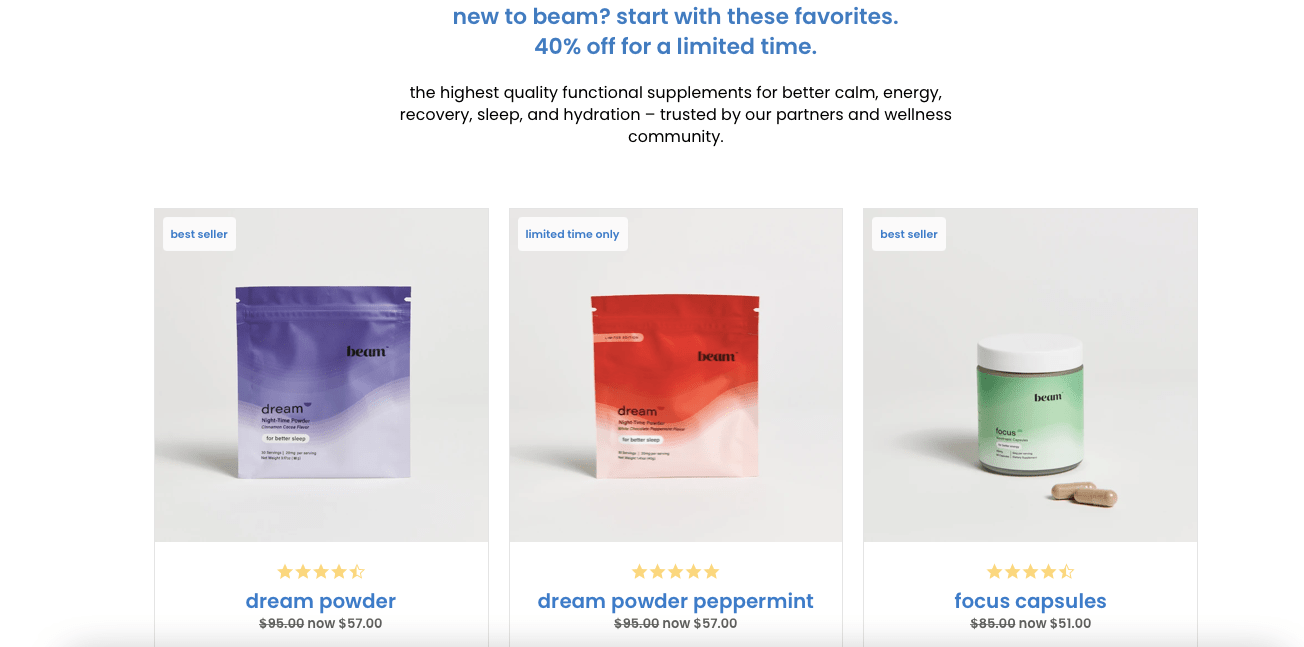
Another great way to guide users to what they need is blog content. You can create posts about different types of products, explaining how to choose the right product and adding relevant product links.
You can naturally place internal links into the text:
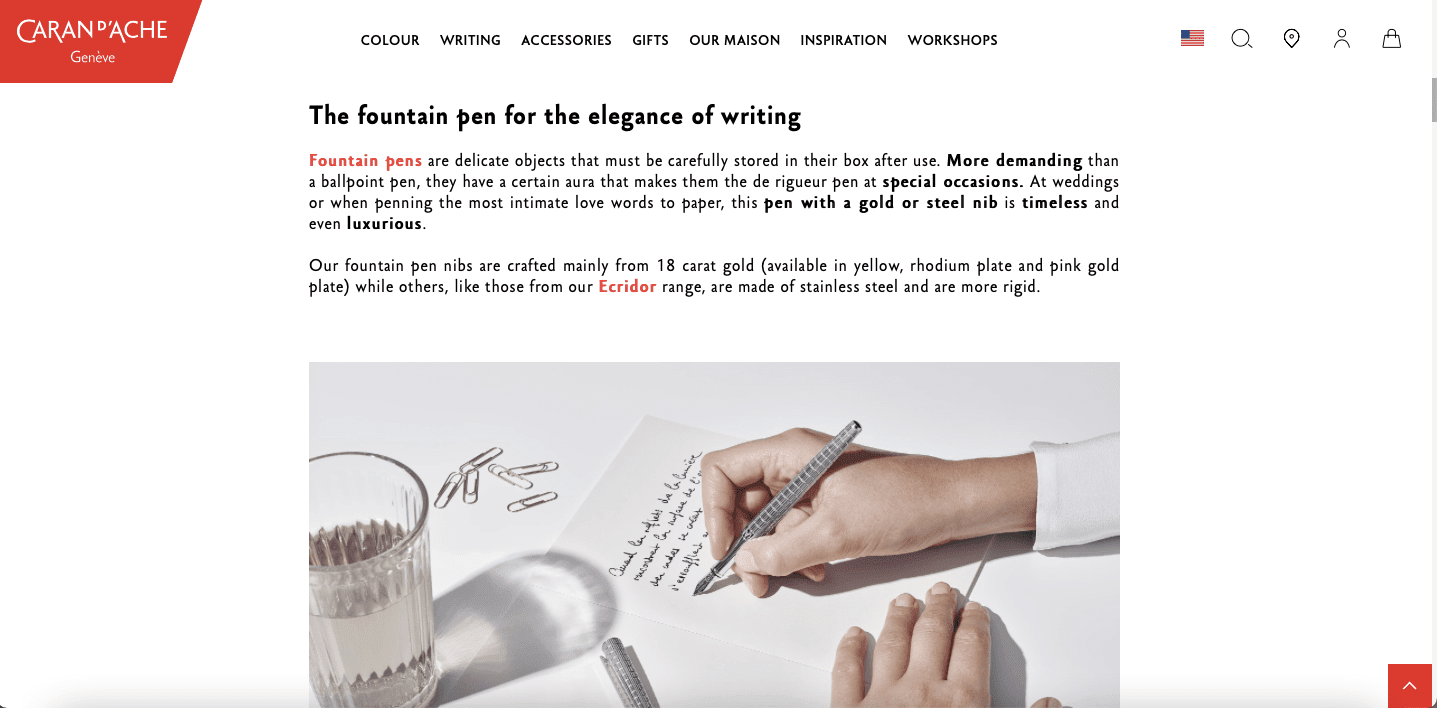
Or, you can design CTAs for each type of product you’re featuring in an article:
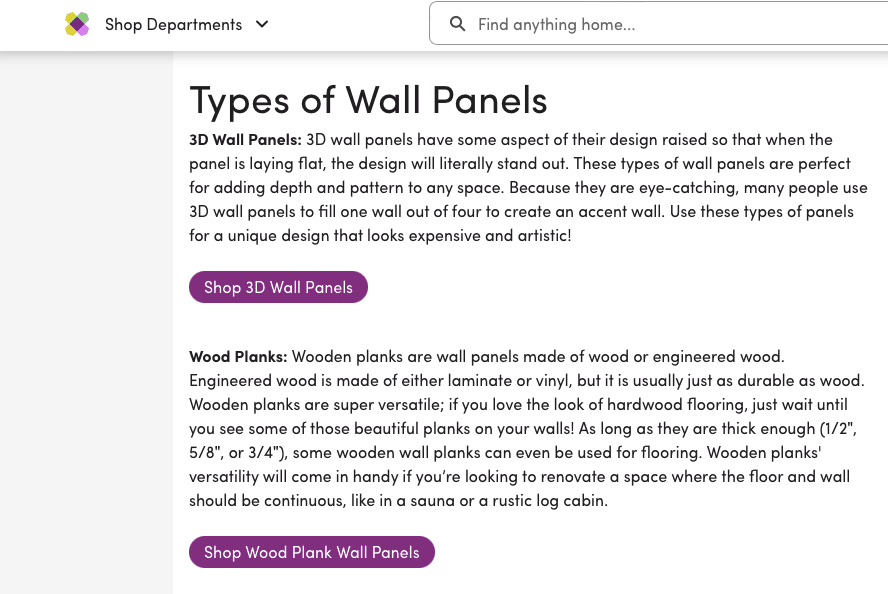
There are lots of opportunities to create engaging content to support your product value and connect with customers. For instance, design a page with product care instructions:
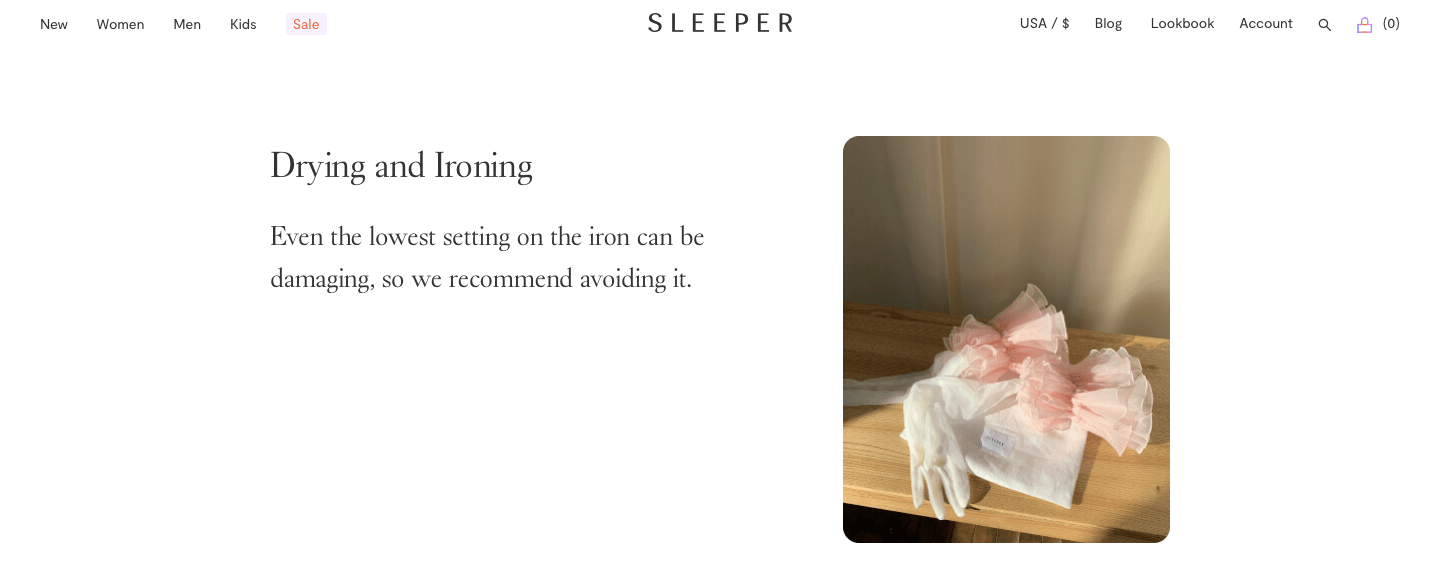
Filtering options
Make sure to add all relevant filters so that users can navigate through a range of products. If there are a lot of variations, filters and sorting options can be placed both on the side and above the list:
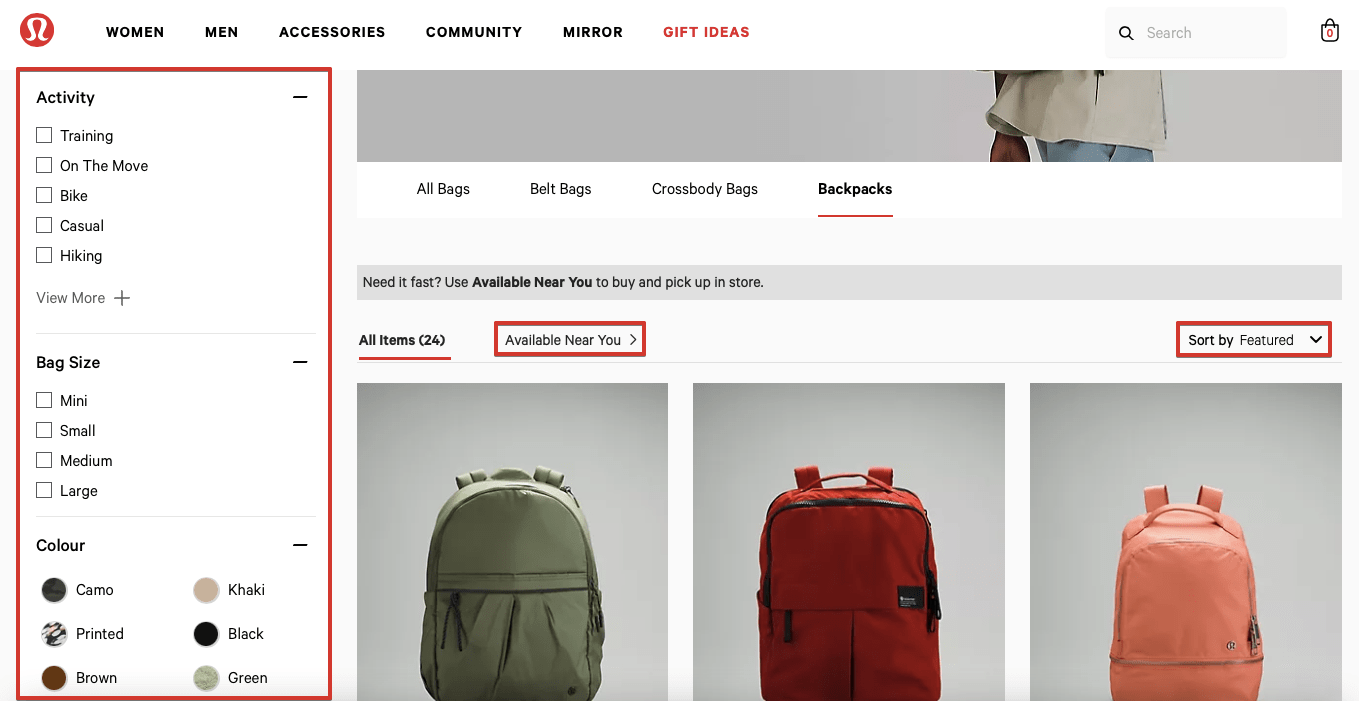
You can also add filters to other sections—to allow visitors to sort reviews by photo, rating, size, etc.:
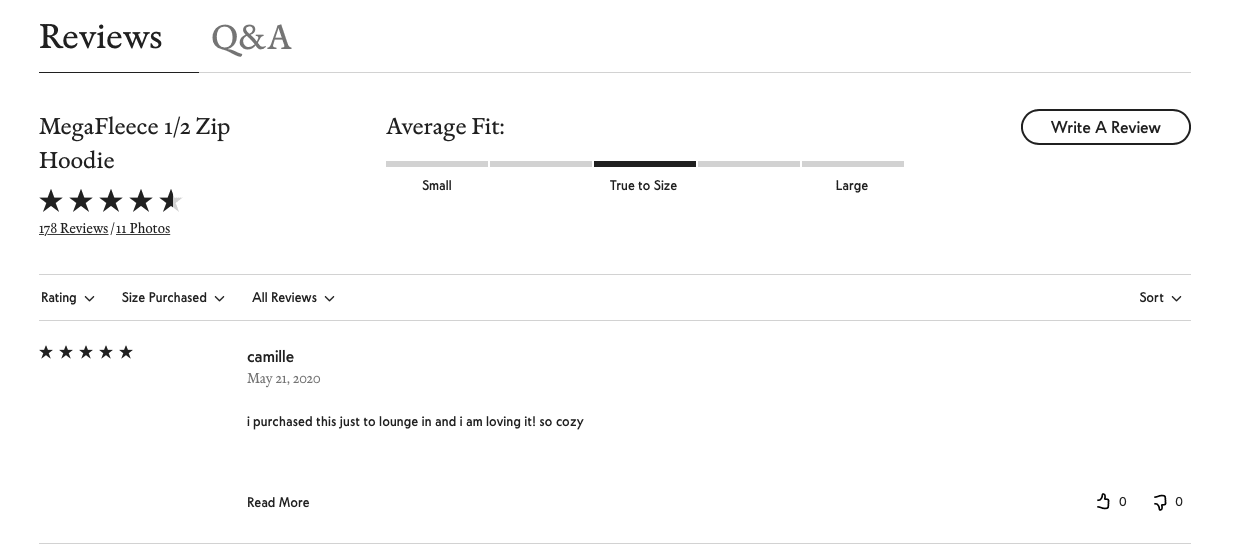
Make sure to regularly test your web pages, especially when you’re redesigning features like filters so that you don’t encounter a situation where there’s no proper UI copy:
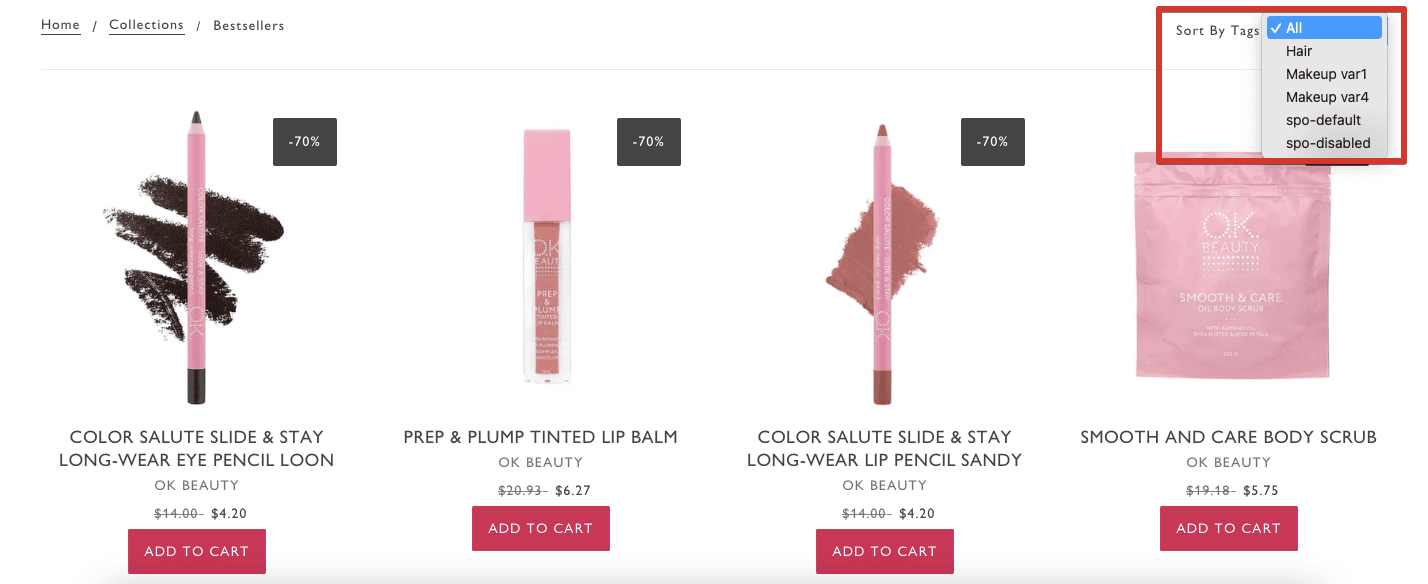
Helpful links in header and footer
The top and bottom of your pages are very important for site navigation. A sticky header (that remains visible during scrolling) is a good idea, as well as presenting a special offer on top of every page. While in your footer, focus on what inspires credibility: contact details, return policies, shipping information, payment security, and so on.
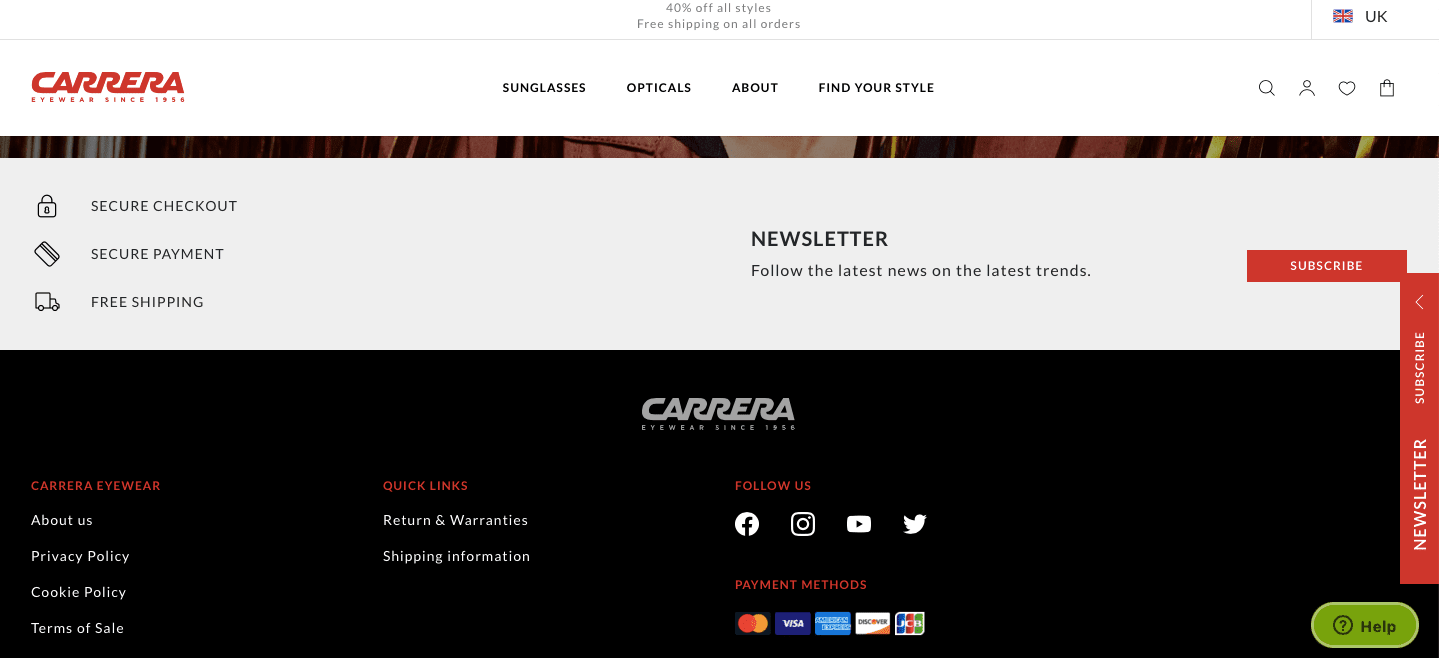
Personalized recommendations
Customers want to be served products that correspond to their tastes and interests. You can add supplementary sections like “styled with” or “people also buy” on product pages:
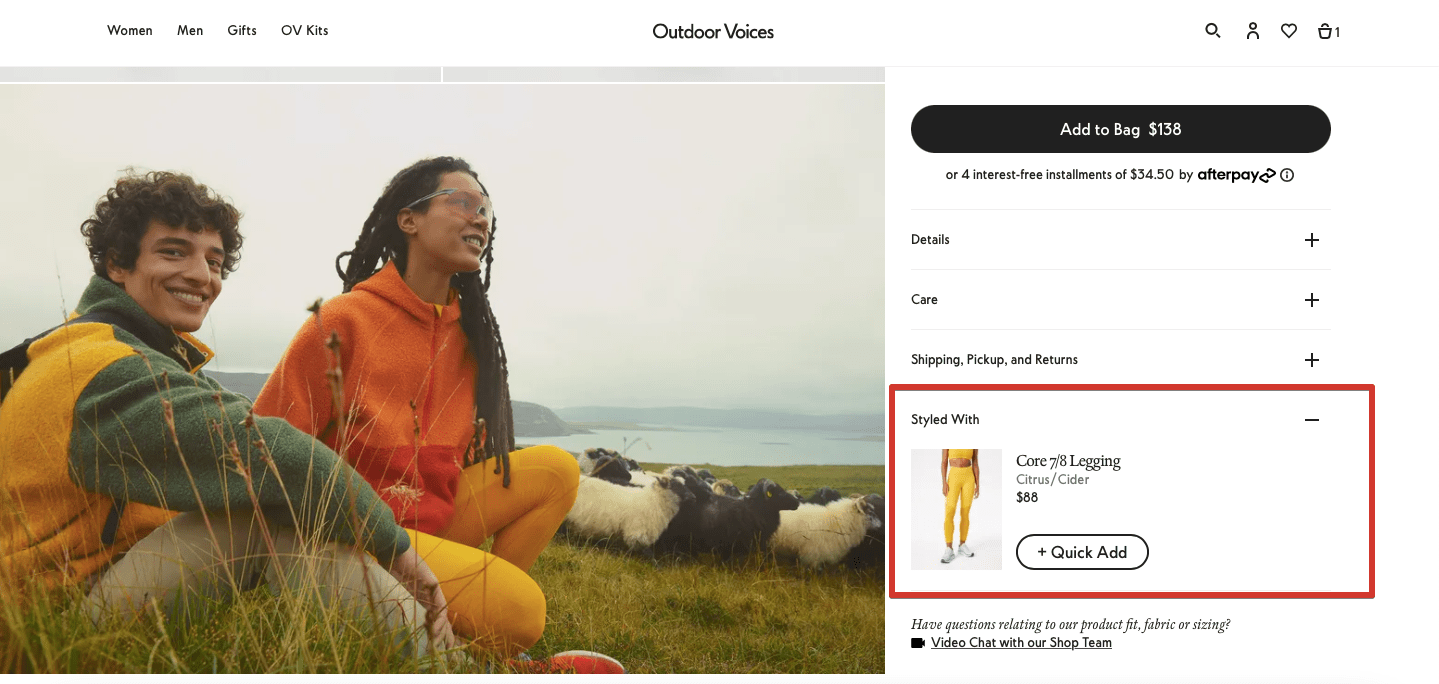
To dive deeper, you can integrate mechanisms that learn similarities between items and suggest particular products to customers based on their history or completed purchases. Another great idea is recommending alternatives to sold-out items a customer was interested in:
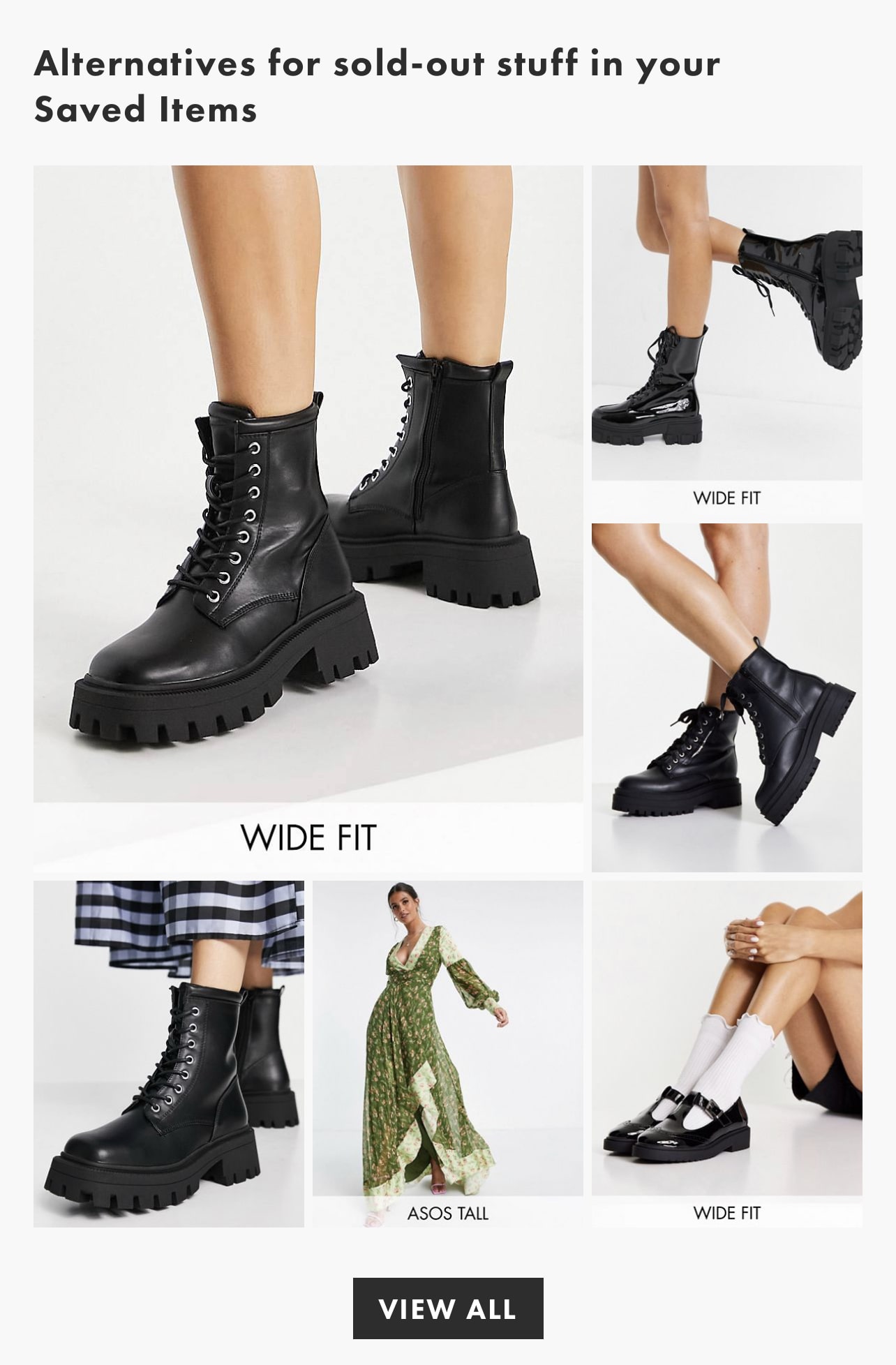
What’s even more engaging is a product-match quiz. Let’s take a look at the quiz made by hair product brand Batiste—it asks about hair type and color, current goals, and fragrance preferences to serve you the best option. It’s fun and quite convincing.
[/slider-single]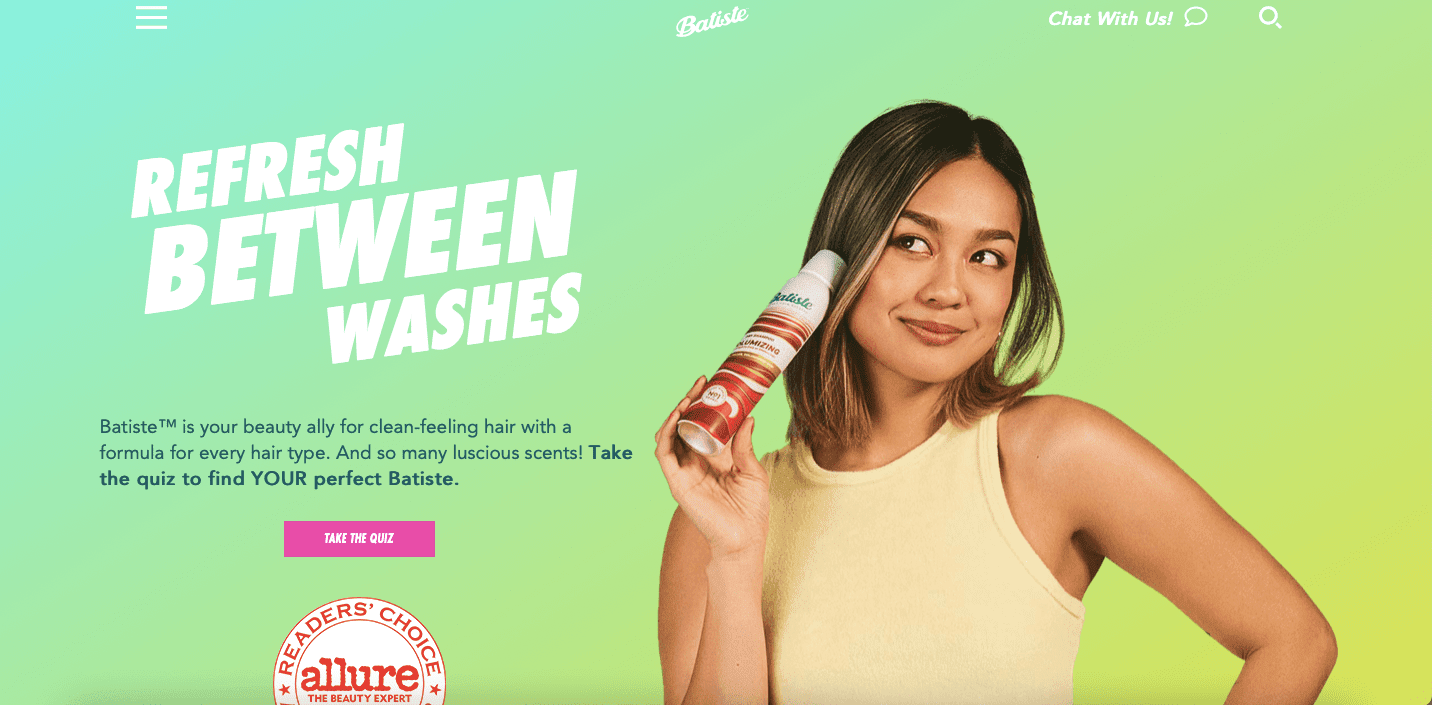
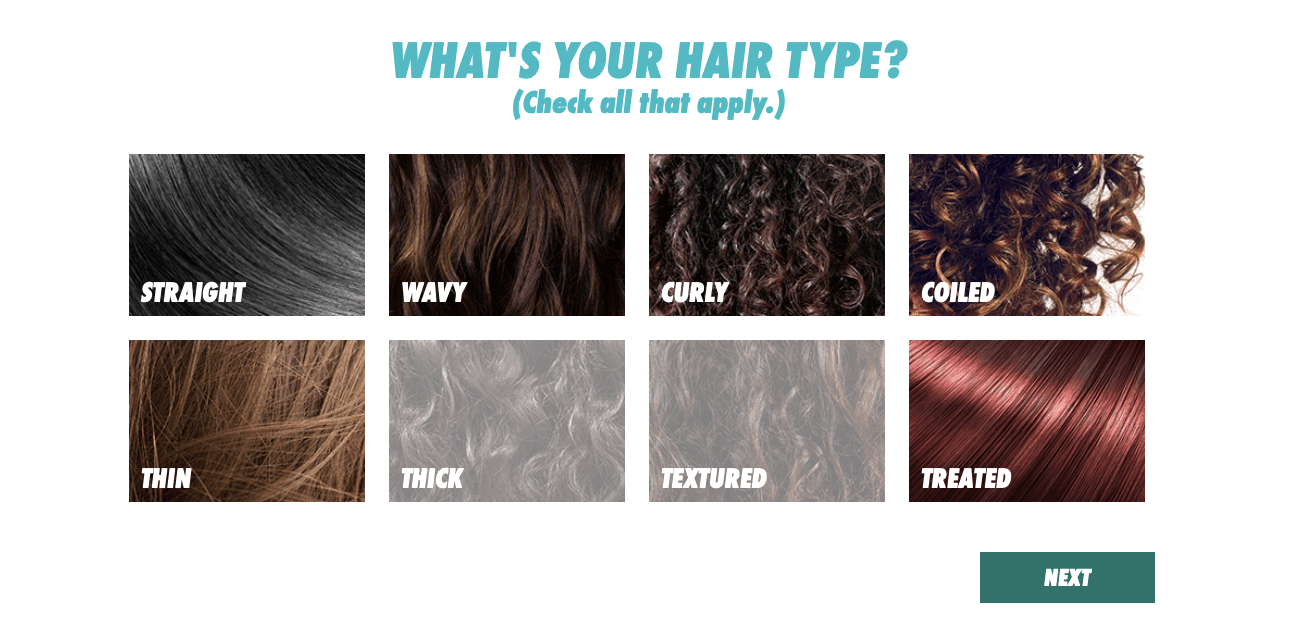
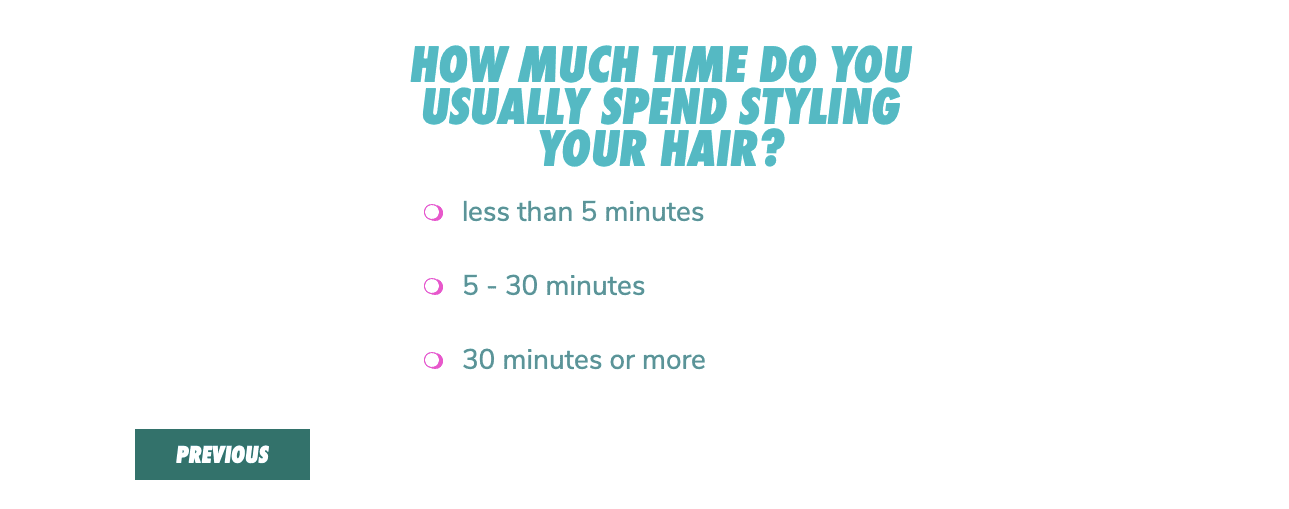

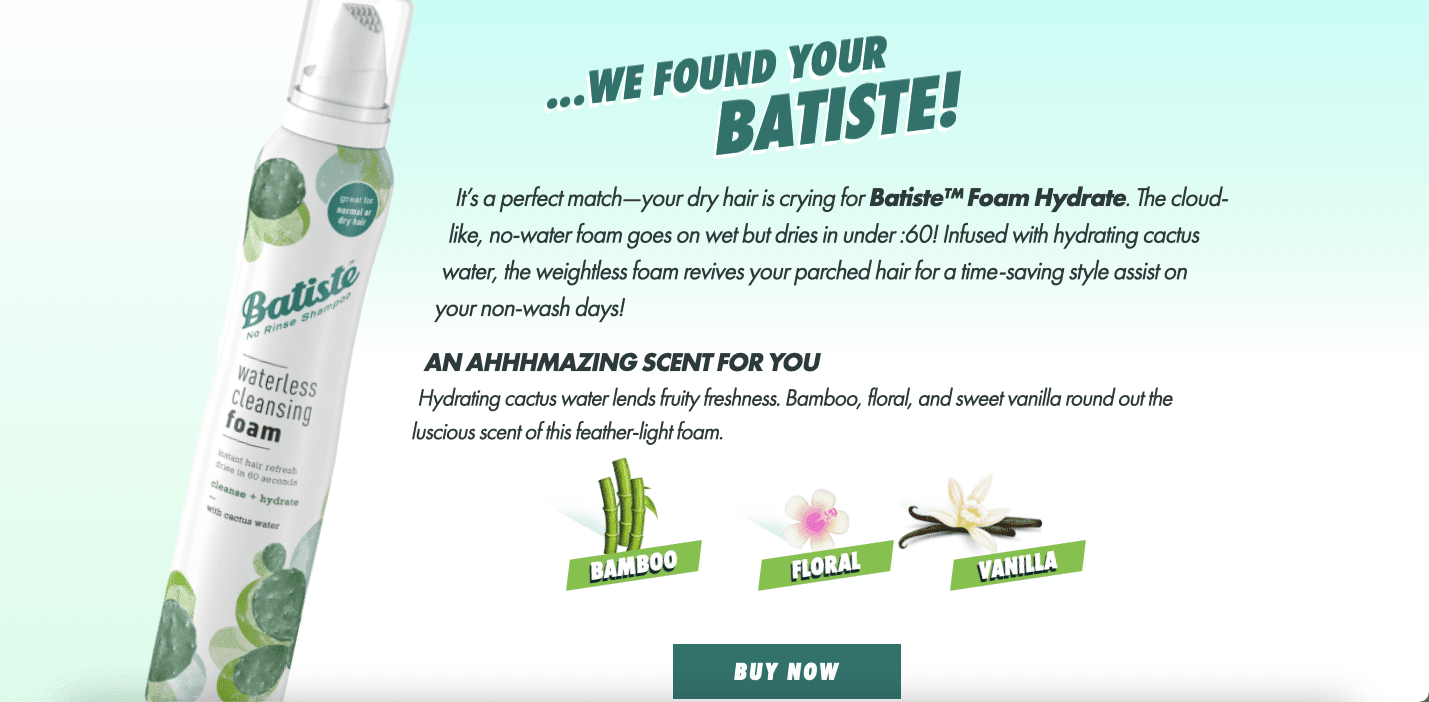
Pain-free checkout and plenty of pricing options
The average cart abandonment rate is close to 70%, which sounds frustrating. The common reasons for cart abandonment are extra costs (49%), obligatory account creation (24%), complicated checkout process (18%), trust issues (17%), and lack of payment methods (7%).
Unless cart abandonment is associated with other problems (say, site crashes), it is the result of a poorly designed checkout experience. What can you do to improve it?
Recognize user location
You can use IP identifiers to learn user location and see if you’re delivering to their country. It’s a shame when a website is available globally but delivery is only accessible to certain countries.
Design a pop-up telling whether your products can be shipped to the user’s location or allow visitors to adjust country and currency settings:
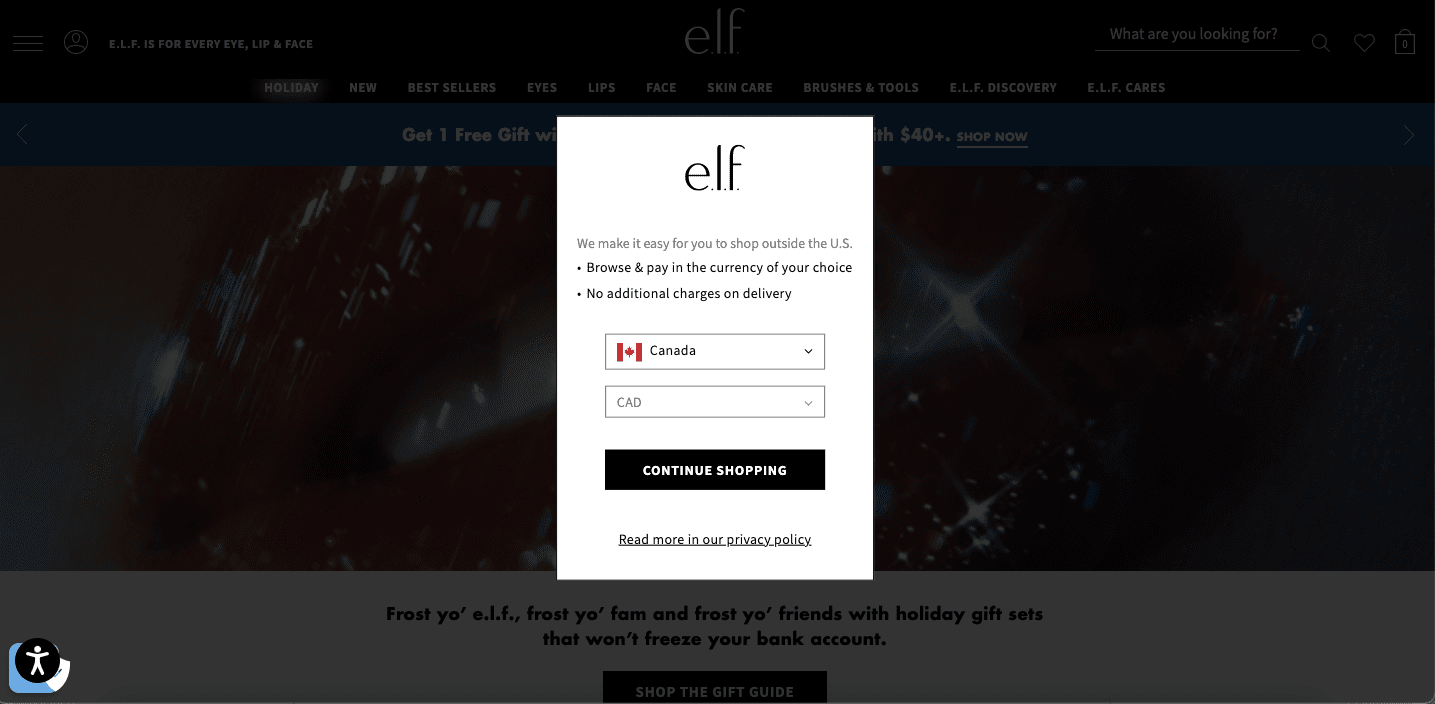
Allow users to purchase as guests
If a user isn’t engaged enough and wants to make a quick purchase, creating an account is a tiresome process, even if it takes several minutes.
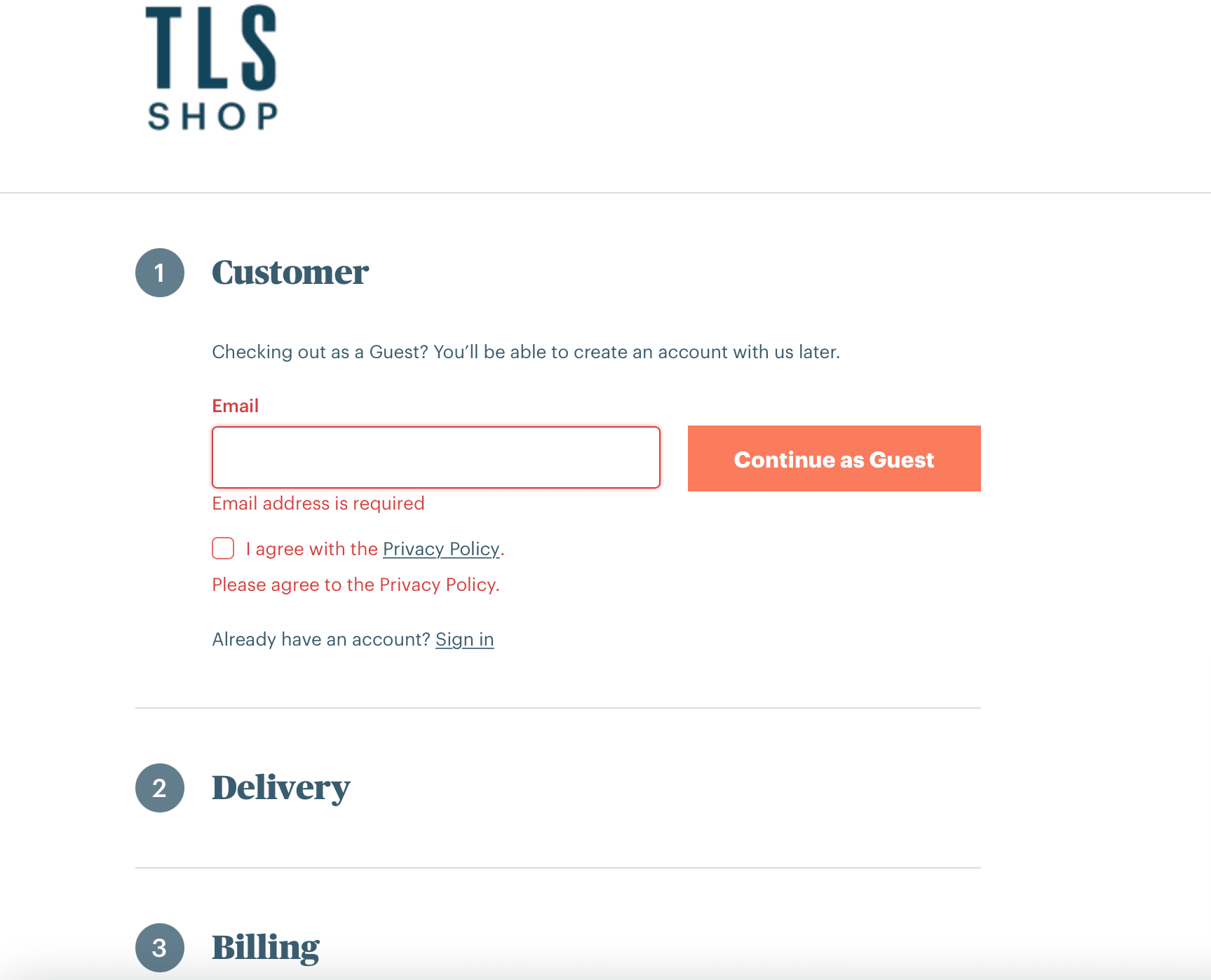
After a user completes a purchase as guest, you can offer them to create an account by describing the benefits:
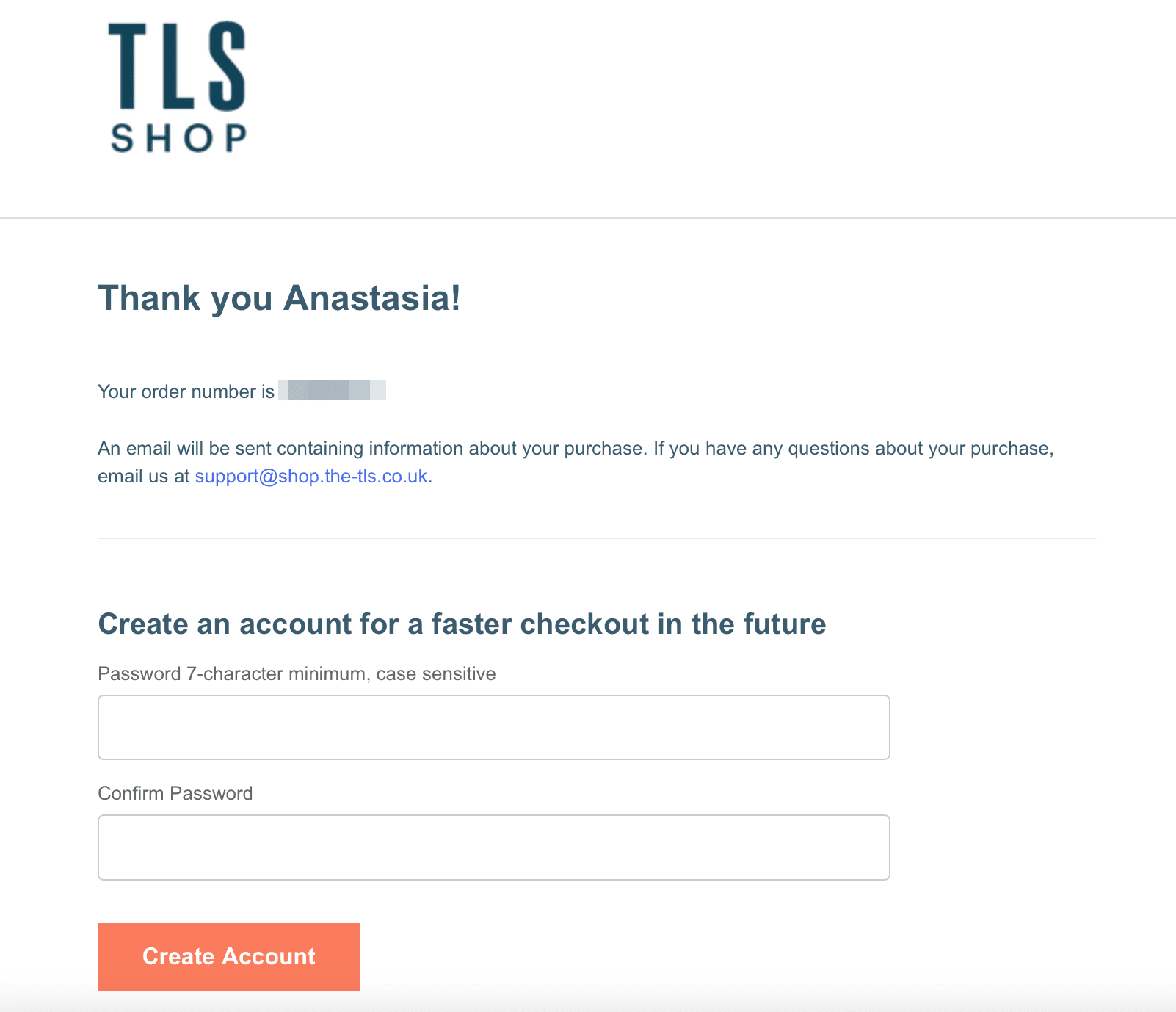
Provide enough payment options
Research your target audience habits to learn what methods to incorporate besides credit cards (gateways like PayPal or Venmo, services like Apple Pay and Google Pay, etc.).
Make sure your payment options are visible before checkout—for instance, in the footer:

Services like Klarna and Afterpay that allow customers to pay a part of the order upfront and other parts later are gaining momentum. They offer interest-free payments as a way to attract those who don’t want to pay the whole sum right away.
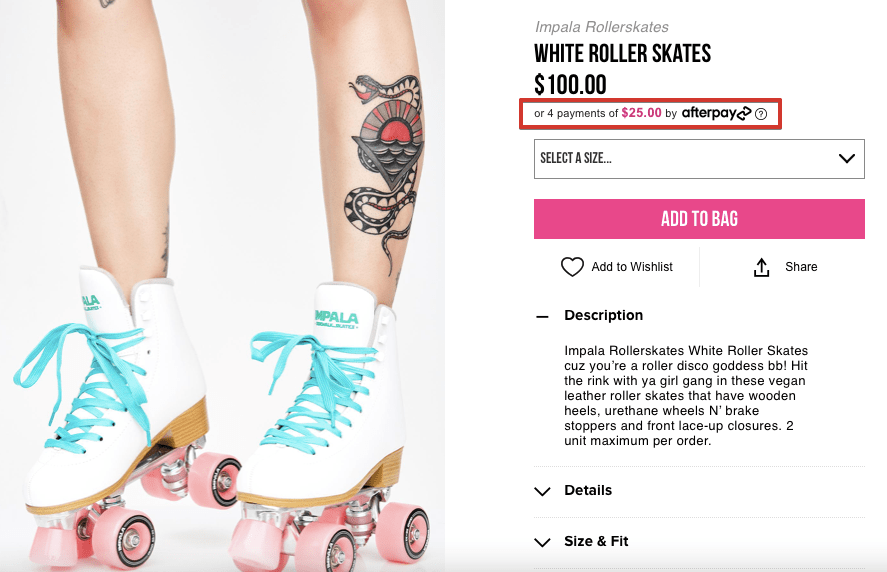
Be clear about delivery costs and conditions
Since high associated costs are the biggest repelling factor, make sure there are no surprises during checkout. Create a detailed shipping information page and if you offer free delivery options (which you probably should), broadcast them wherever possible.
Another must-have in today’s consumer reality is contactless delivery. Highlight such an option for users to feel safer about their purchase:
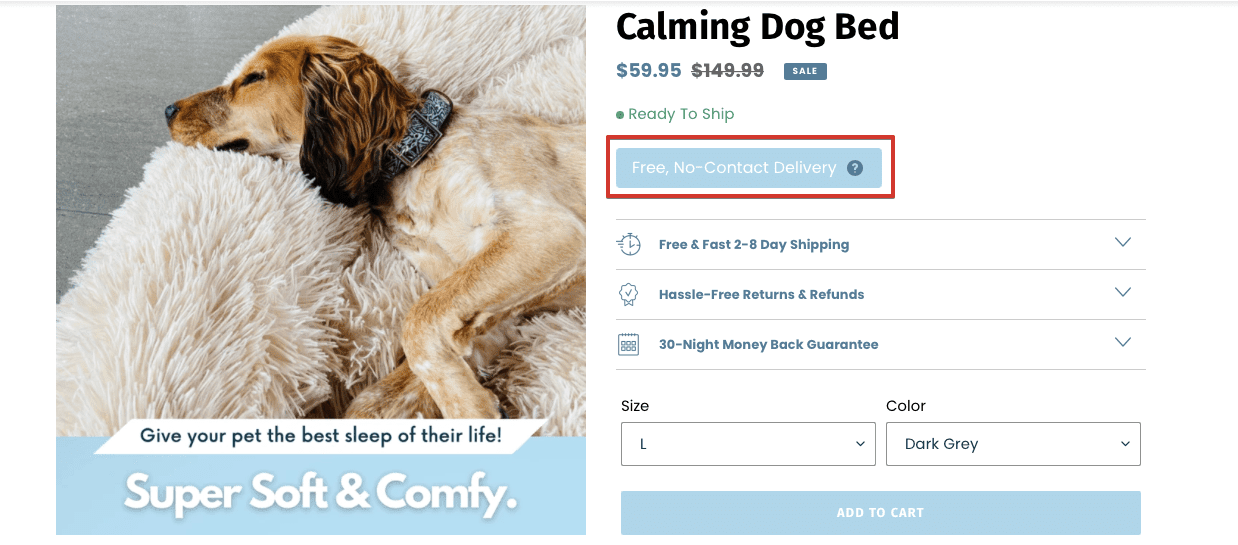
If your store offers free shipping on orders over a certain spent amount, design unintrusive messages to encourage customers to order more to be eligible for it:

Analyze cart abandonment data
Most ecommerce CMSs have in-built capabilities that track what products were in abandoned carts and at what stage a user left the website. Cart abandonment software can help you customize emails and improve the checkout conversion rate and experience.
Trust signals
Trust and transparency are essential in ecommerce. The majority of shoppers research reviews, read return policies, and pay attention to contact details on a website before making a purchasing decision.
Add trust signals that will communicate the idea of your company’s integrity and authority. You can feature mentions in press:

Or, you can craft a specific section dedicated to the story behind your products:
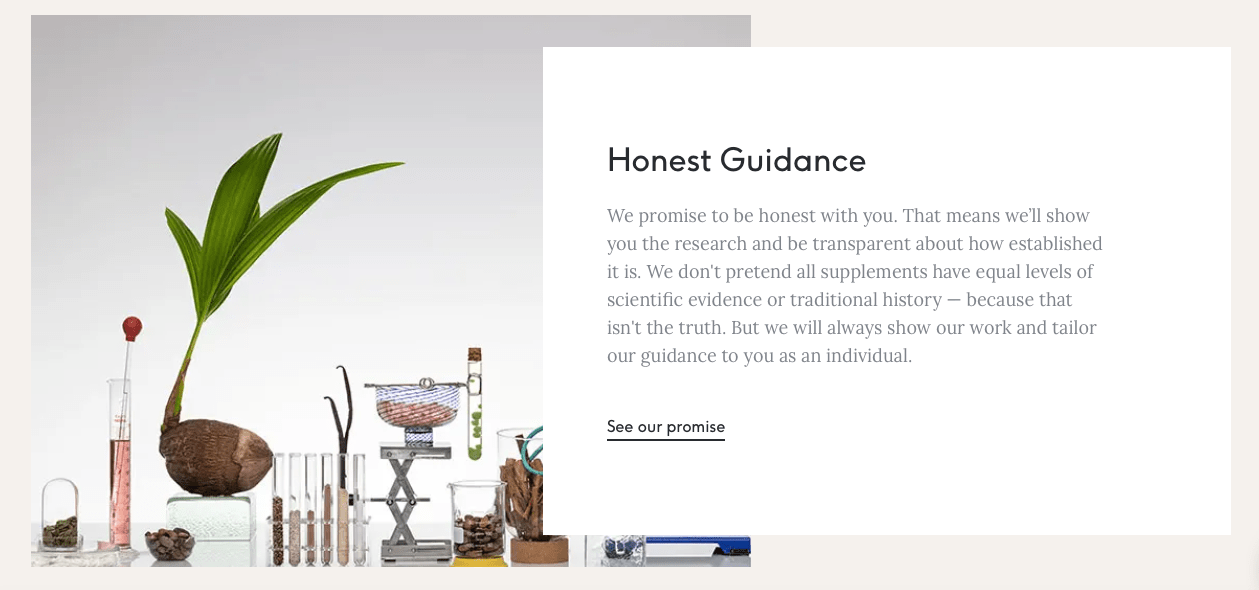
Real-time pop-ups that inform when other users make a purchase can also boost credibility:
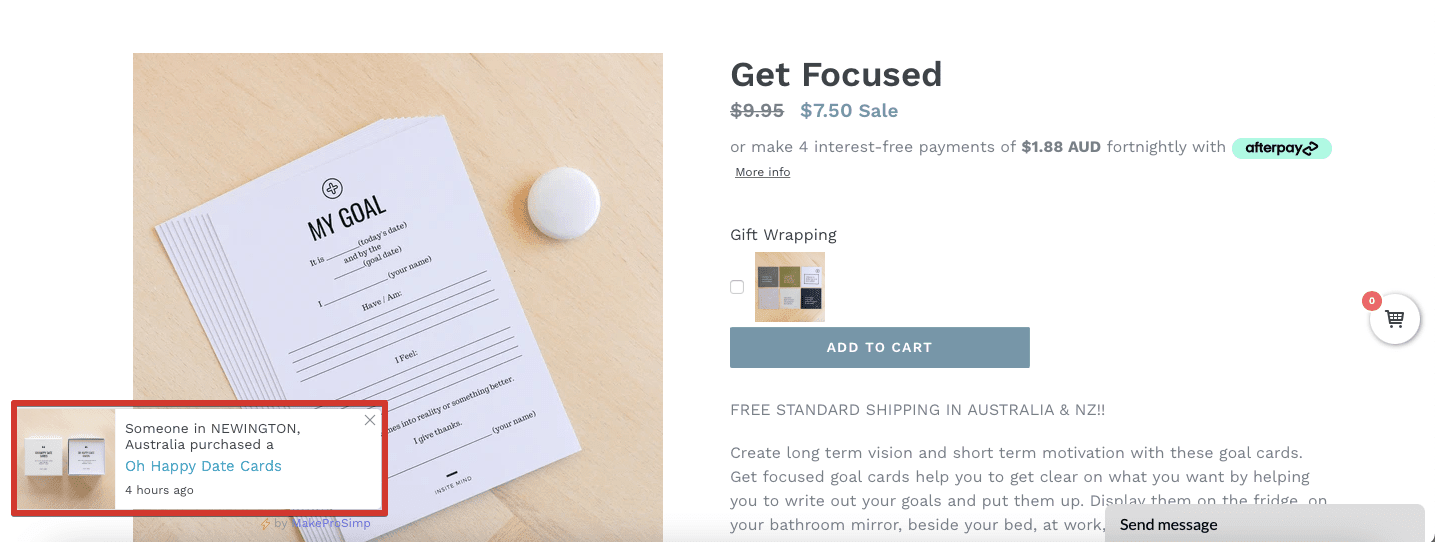
Referral programs and exclusive offers
Referrals have proved to be the most effective acquisition channel, bringing an average conversion rate increase of 4%. The “give and get” model is commonly used by ecommerce:
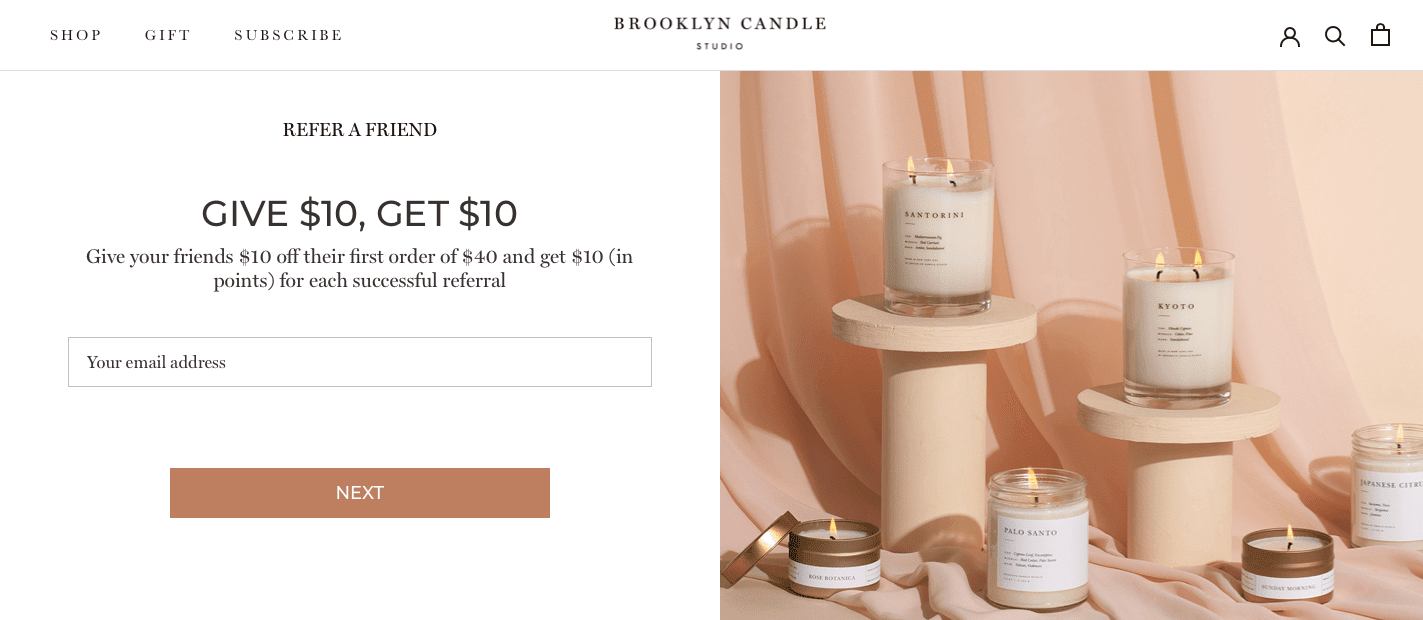
Besides asking customers to refer a friend, you can incorporate a reward program that will give points for purchases and other actions (newsletter subscription, social media share, etc.).
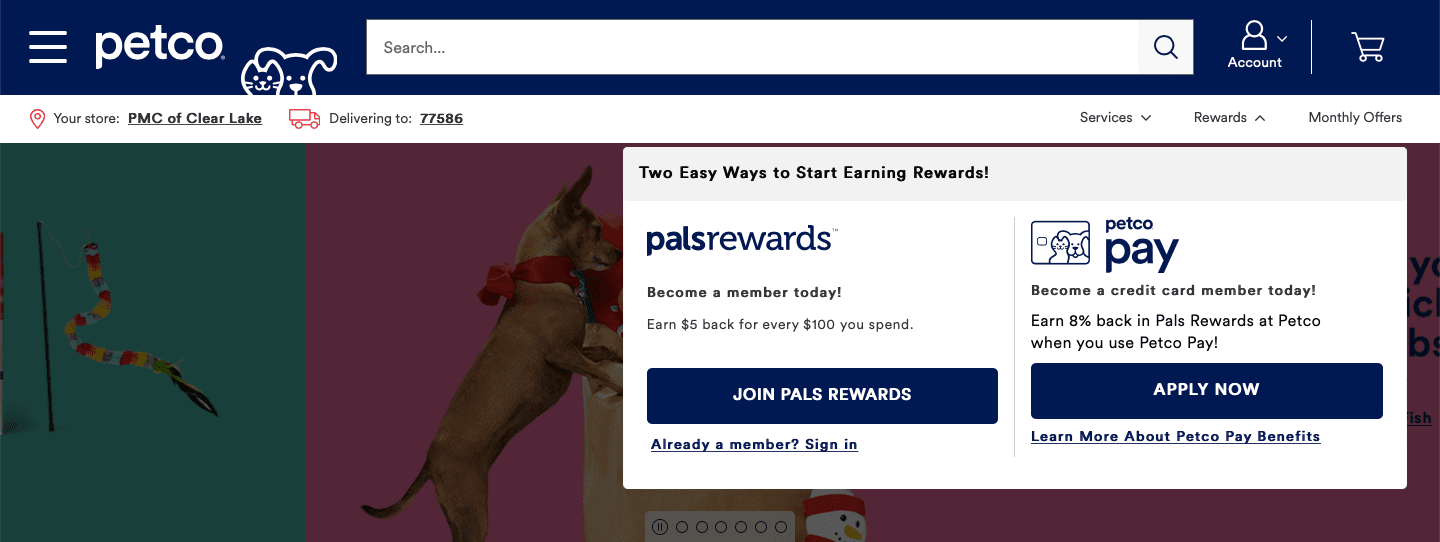
Another popular practice is individual coupons sent to first-time customers: they allow you to grab user emails and boost their interest in your products. Instead of a single coupon type, you can offer different discounts in a fun form—like this fortune wheel:
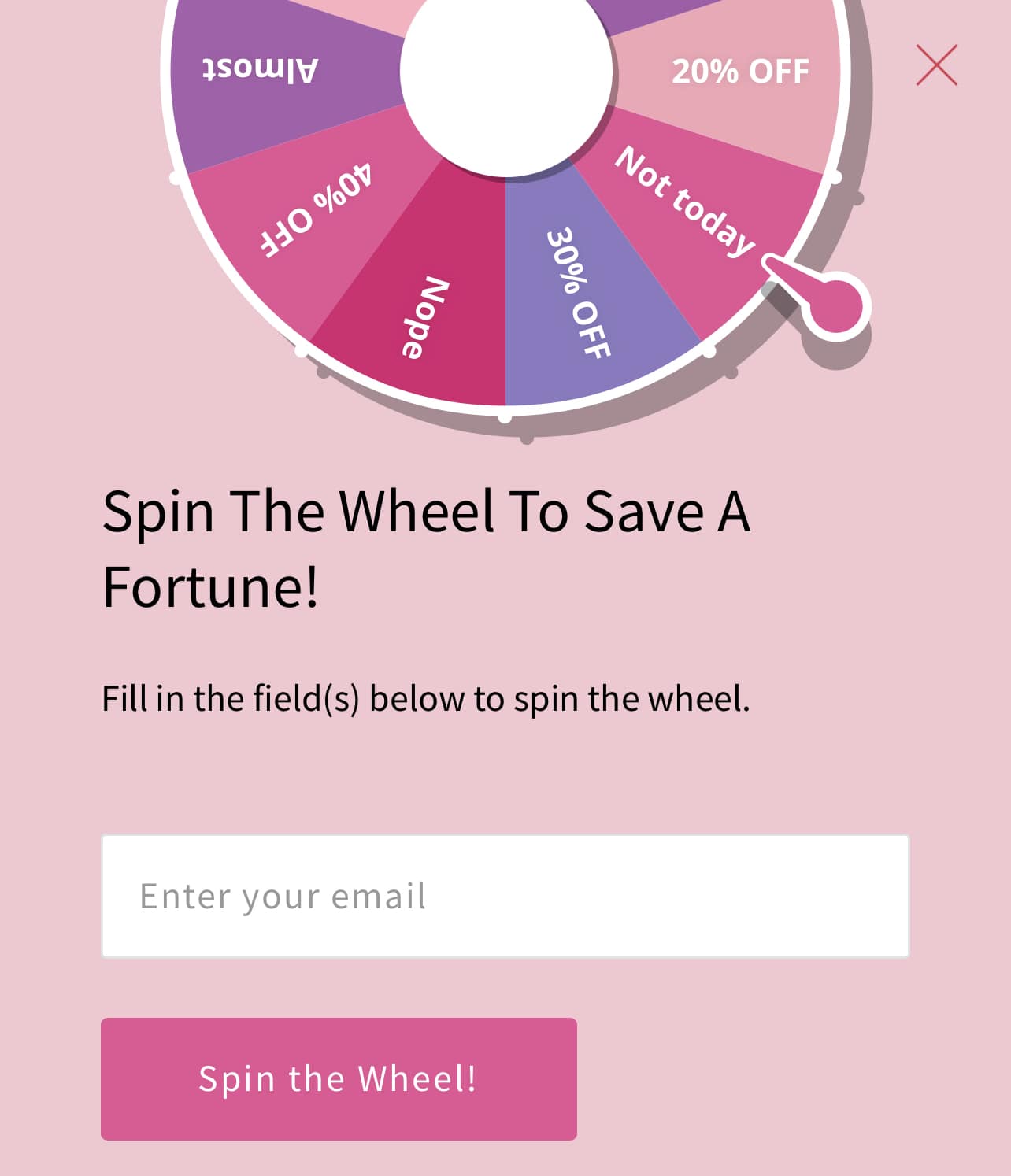
FOMO marketing
The fear of missing out is a real thing that affects 70% of Millennials. By creating urgency, you can drive more conversions. Messages like “only 1 left in stock” or “offer ends in 2 days” work well with FOMO psychology.
You can also integrate a real-time unique view tracker to encourage users to act faster:
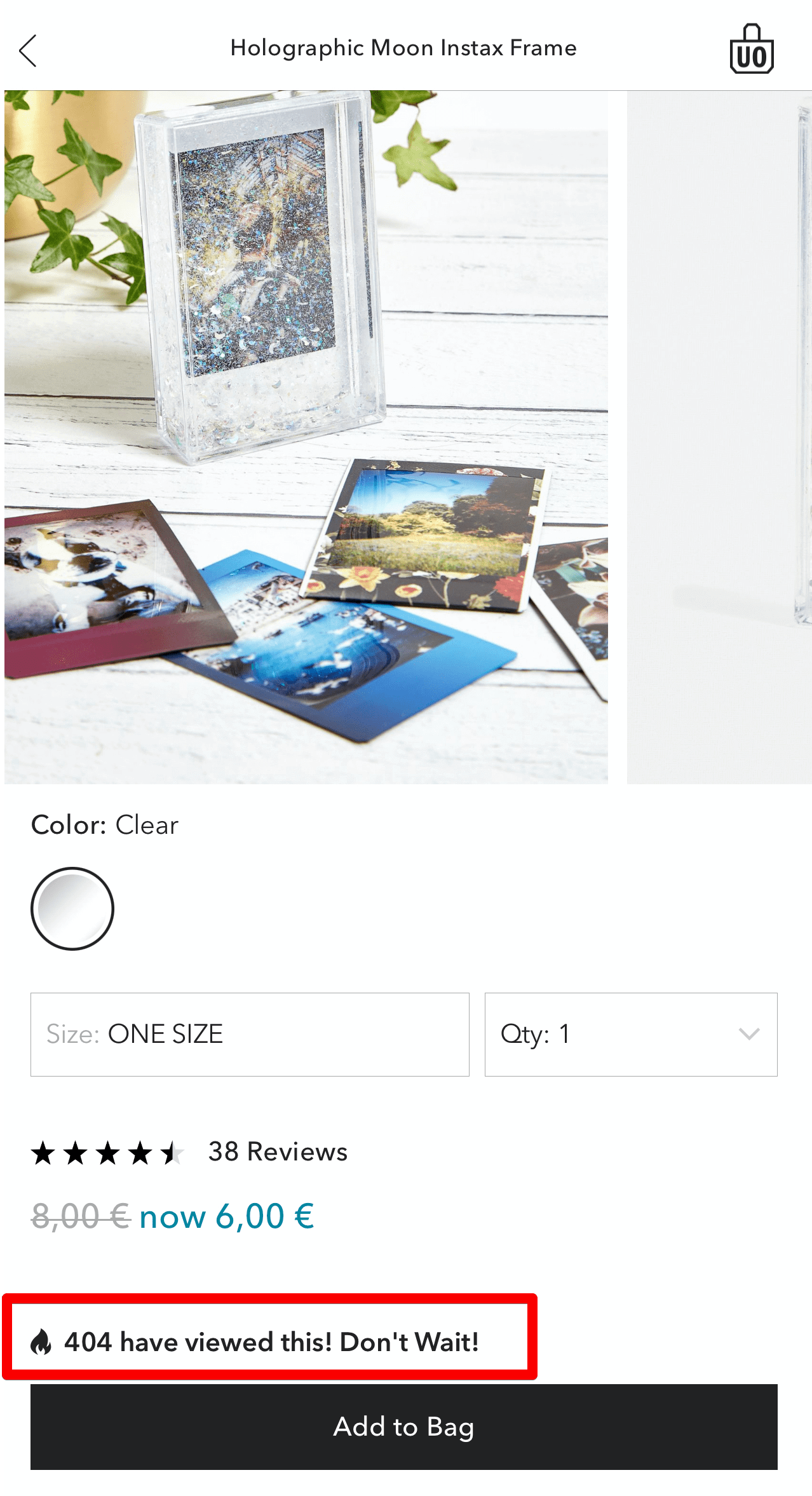
FOMO marketing is especially relevant during the holiday season. Due to higher traffic volumes and delivery time limitations, you should highlight when users can buy so they won’t end up without holiday gifts:
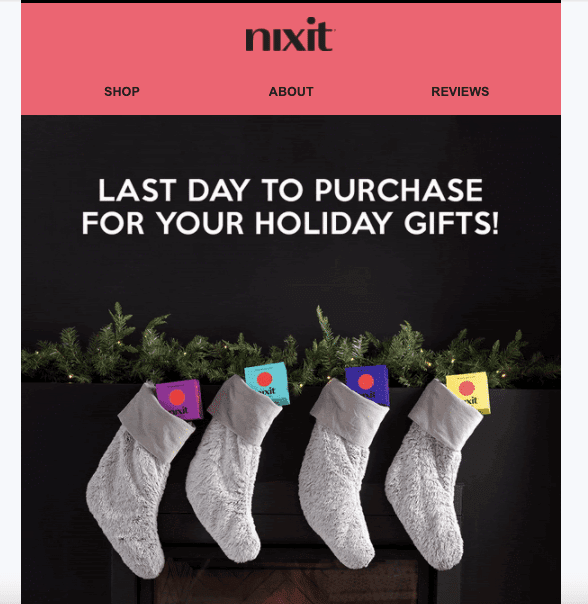
User-generated content and engagement tricks
User-generated content is a great tool for conversion improvement. As research by PowerReview shows, images and videos created by consumers and posted on ecommerce websites double the average conversion rate.
It’s a win-win situation: your customers will enjoy being featured and you’re likely to get more conversions.
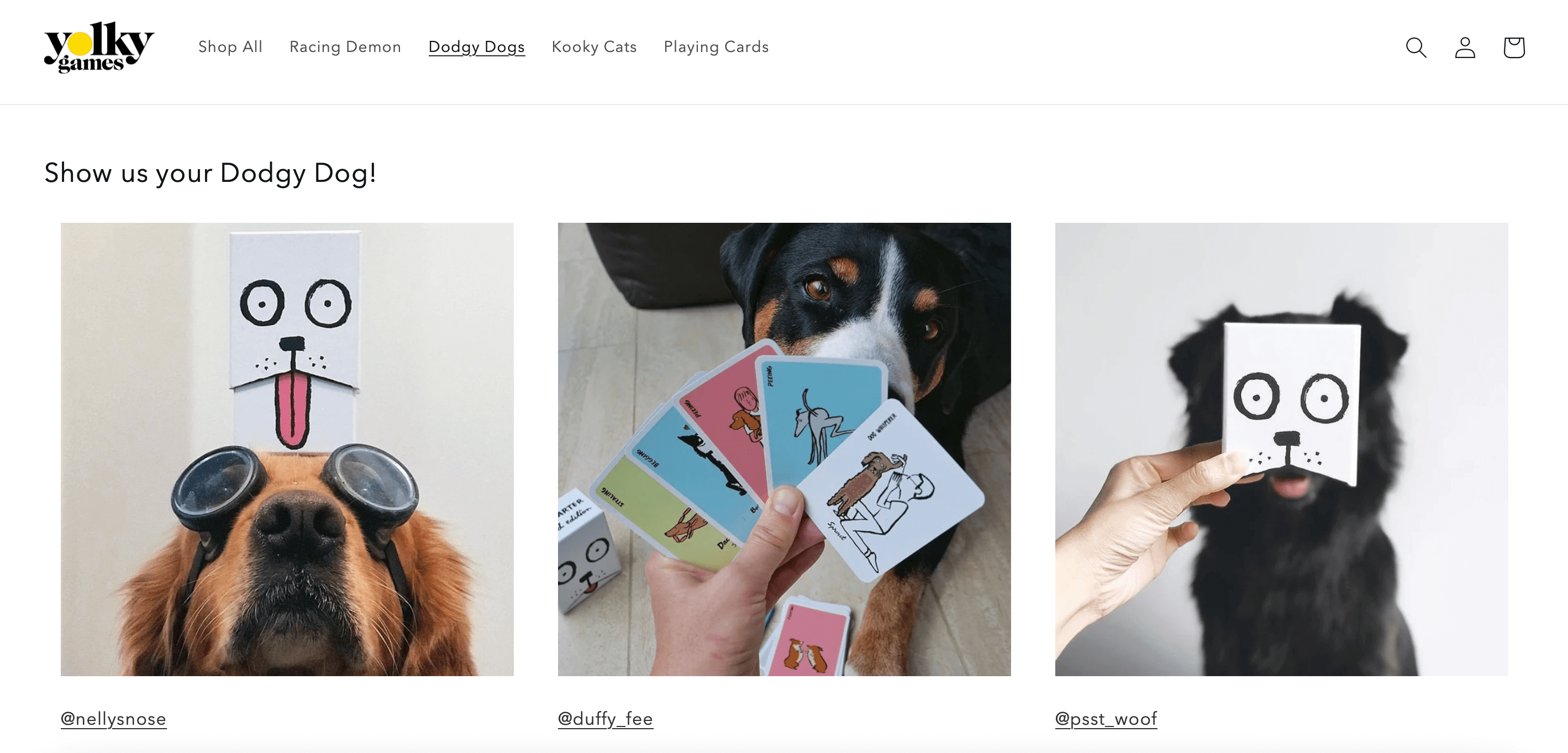
There are some other ways you can engage customers and make them feel a part of your story. Here’s how a sweetshop connects with their audience by encouraging them to vote for their favorite candy and influence product line plans:
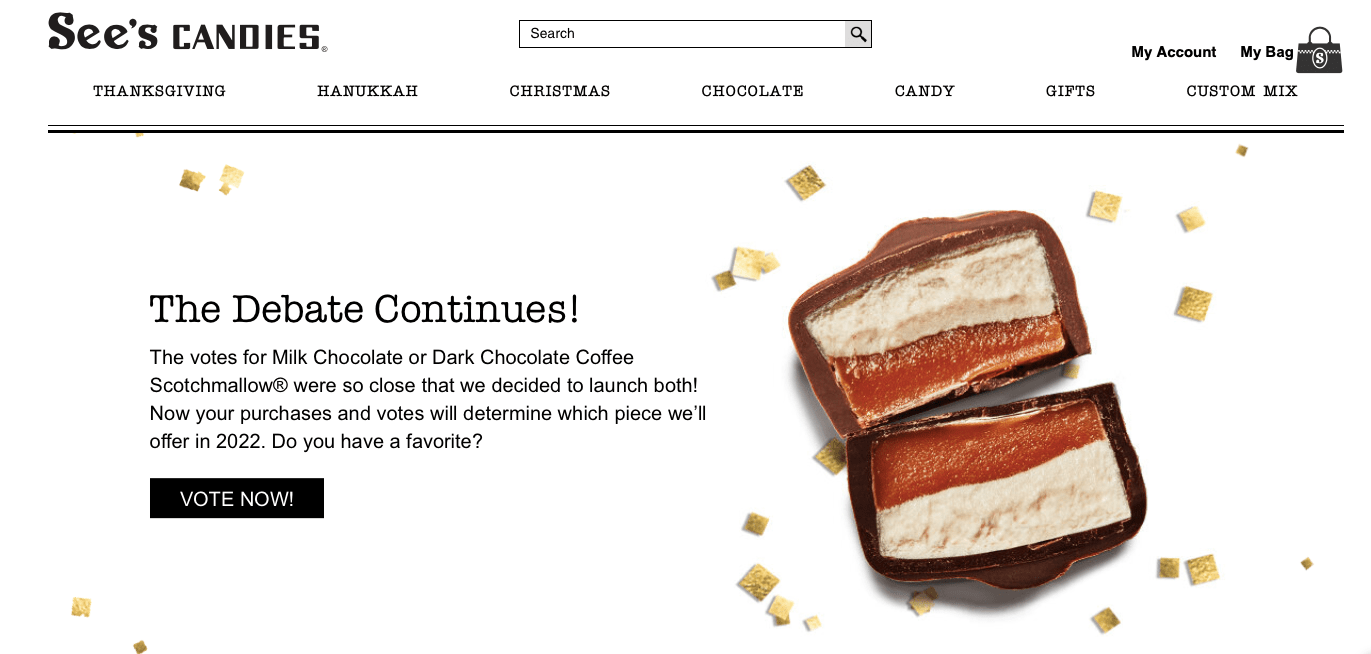
Closing thoughts
Without continuous conversion rate optimization, you’re at risk of being left behind by competitors. Learn as much as you can about your customers and their behavior and use the insights you gain to test various hypotheses and improve your website and overall operation.
When tracking and measuring your conversion rate, think about the different markets you’re targeting. Customers from different countries, factors like location-specific logistics, level or credit card penetration, and market maturity should be taken into account. Also, don’t stop at conversion rate calculation and improvement. Analyze all valuable metrics like AOV, CPL, or CLV to get the full picture of how your business is growing. With a holistic approach, you’re likely to expand your reach, maintain a solid presence in search, and enjoy a constant flow of new customers.
Do you have some interesting CRO tricks up your sleeve? Share in the comments section!


